
JULY 2015 LIVE AID: 30 Years On We talk to survivors of the famine that shocked the world PAGE 52 “I Remember”: Erika Roe PAGE 20 Best of British: Outdoor eatres PAGE 66 Enter Our Photo Competition! PAGE 61 e Man Who Saves Bears PAGE 98 Laugh ...........................................................140 Books that Changed my Life .......................129 If I Ruled the World .......................................74 Word Power .................................................133 60-Second Stand-up ...................................144 Beat the Cartoonist ......................................143 JULY 2015 £3.79 readersdigest.co.uk











(Please quote RDP028 when ordering)
Online: shop.readersdigest.co.uk
Catch up now with the complete series one of this hit BBC television adapation of the novels written by Winston Graham Original 1970s series also available Save £5 How
Phone: 0844 332 8080 (8am-8pm Mon-Fri, 9am-5pm Sat-Sun) By Post: Reader’s Digest, FREEPOST RTHR-LLRY-ZHYS, Ringwood, BH24 1HD (Cheques should be payable to Reader’s Digest, and please remember to quote RDP028 and include your full name and address, along with the details of the item(s) required).










Missed the TV series? 164118 3 DVDs Cert 12 7hrs 44 Subtitles RRP £24.99 RD SHOP PRICE: £19.99
to order
features
12 Reasons to be chee R ful
James Brown’s inquisitive son is giving him a fresh outlook
e ntertainment
20 “i Remembe R”: eR ika R oe
The Twickenham Streaker on why she’s bearing all for breast cancer
28 all the fun of the fai R
The story behind Carters
Steam Fair, a slice of Victorian Britain in the 21st century
Health
36 stop that noise in you R head
Learn how to tone down the maddening, incessant symptoms of tinnitus
Inspire
52 R emembe R ing the e thiopian famine
Thirty years after the tragedy that touched the world and inspired Live Aid, we meet some of the survivors
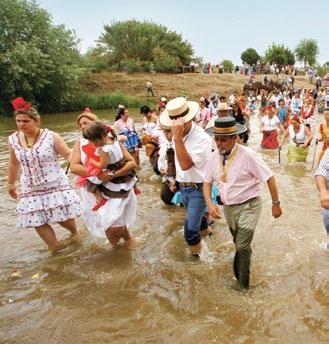
61 family holiday photo competition
Enter your snaps to win a fantastic trip to Turkey
66 best of b R itish: outdoo R theat R es
We pick the finest alfresco playhouses in the country
76 l iving with f loods
The Dutch show us a thing or two about coping with water
travel & a dventure
84 spain’s wildest pa Rty
Join the masses as they dance their way to El Rocío
98 saving ou R bea R s
Meet the man saving animals from appalling conditions
FRONT COVER: © A N d R é B ER g A mi N 07•2015 | 1
july 2015
Contents
p84
e DI tor’s letter

in an age of highp Rofile cha R ity fund R aise R s, it’s easy to forget the huge impact of Live Aid 30 years ago. And although there’s still a lot of cynicism about celebrities getting involved in worthy causes, there’s no doubt that, in this case, it made a real difference—as our interviews with survivors of the Ethiopian famine on p52 show.
On the subject of charitable causes, we chat with the so-called “Twickenham streaker” Erika Roe on p20, who decided to strip off once more to raise money for breast cancer following the tragic death of her sister. And we’ve chosen to emphasise the importance and joy of family on p61 with our holiday photo competition—it could net you £400 or a fabulous trip to Turkey, so get those cameras clicking!
Finally, a warm welcome to our new Home & Garden writer Lynda Clark, who is full of tips to transform your interiors and exteriors. Check out her first column on p116.
 Tom Browne
theeditor@readersdigest.co.uk
Tom Browne
theeditor@readersdigest.co.uk
facebook.com/readersdigestuk
twitter.com/readersdigestuk
pinterest.com/rdigestuk
google.com/+ReadersdigestUK1
| 07•2015 2 IN e V er Y I ssue 6 Over to You 8 See the World d ifferently e ntertainment 17 July’s cultural highlights Health 42 Advice: Susannah Hickling 48 Column: d r m ax Pemberton Inspire 74 if i Ruled the World: m ichael Vaughan travel & a dventure 94 Column: Catherine Cole Money 106 Column: Nick Hill food & Drink 112 Tasty recipes and ideas from Rachel Walker Home & Garden 116 Column: Lynda Clark technology 118 Olly m ann’s gadgets f ashion & Beauty 120 g eorgina Yates on how to look your best Books 124 July Fiction: James Walton’s recommended reads 129 Books That Changed my Life: m arian Keyes f un & Games 130 You Couldn’t m ake it Up 133 Word Power 136 Brain Teasers 140 Laugh! 143 Beat the Cartoonist 144 60-Second Stand-Up: Carl d onnelly
Reader’s Digest is published in 29 editions in 17 languages
No twist required

P10017
One Handed Tin Opener
RRP £22.99 Price: £15.99
A powerful yet simple mains operated tin opener, designed to be safely used in one hand. At the press of a button the tin opener glides around the can to have the lid o in seconds. Ideal for the elderly and disabled


How to order
(Please quote RDP028 when ordering):
Online: shop.readersdigest.co.uk
Phone: 0844 332 8080 (8am-8pm Mon-Fri, 9am-5pm Sat-Sun)
By Post: Reader’s Digest, FREEPOST RTHR-LLRY-ZHYS, Ringwood, BH24 1HD (Cheques should be payable to Reader’s Digest, and please remember to quote RDP028 and include your full name and address, along with the details of the item(s) required)



FREEPOSTAGE ONALLORDERS Only £15.99
Editor-in-ChiEf Tom Browne
Sub-Editor Laura Dean-Osgood
digital ContEnt Editor Mandi Goodier
art dirECtor Yvey Bailey
graphiC dESignEr Katie Johnson
advErtiSing dirECtor Simon Fulton simon.fulton@readersdigest.co.uk 0203 701 5936
advErtiSing aCCount dirECtor Mike Allen mike.allen@readersdigest.co.uk 0203 701 5935
CEo Gary Hopkins
ChiEf opErating offiCEr Julie Leach
digital MarkEting and CaMpaignS
ManagEr Maggie Champion
digital ContEnt ExECutivE Kylie Petitt
thE rEadEr’S digESt aSSoCiation inC (uSa)
president and Chief Executive officer
Bonnie Kintzer
vice president, Chief operating officer, international Brian Kennedy
Editor-in-Chief, international Magazines
Raimo Moysa
For all subscriber enquiries please use the customer services number below
W E pay...
£50 for the star letter and £30 for regular letters.
Email readersletters@readers digest.co.uk or go to readers digest.co.uk/contact-us
W E al S o pay...
£50 for the true stories, anecdotes, jokes in laugh! and you Couldn’t Make it up…, and contributions to end-ofarticle fillers and My great Escape.
Email excerpts@readersdigest.co.uk or go to readersdigest.co.uk/contact-us
Sorry!
We cannot acknowledge or return unpublished items or unsolicited article-length manuscripts. Do not send SAEs. Article-length stories, poetry and cartoons are not requested.
Cu S to ME r S E rvi CES
Contact Customer Services for renewals, gifts, address changes, payments, account information and all other enquiries. Call 0330 333 2220* or email customer_service@readersdigest.co.uk
talking M aga Z in E S
Reader’s Digest is available in a talking edition for blind and partially sighted people for £16. For details, call 01435 866 102, email info@tnauk.org.uk or visit tnauk.org.uk
S ub SC riptionS
Visit readersdigest.co.uk or write to: Reader’s Digest, PO Box 7853, Ringwood BH24 9FH. uk: £45.48 a year. republic of ireland: €61.20 a year. Prices include delivery. For gift subscriptions, contact Customer Services.
| 07•2015 4 *Calls to 03 numbers cost no more than a national rate call to an 01 or 02 number and will be free if you have inclusive minutes from any type of line including mobile, BT or other fixed line
us your stories, jokes
letters or Visit o ur Website small Print: Ensure submissions are not previously published. Include your name, email, address and daytime phone number with all correspondence. We may edit letters and use them in all print and electronic media. Contributions used become world copyright of Vivat Direct Ltd (t/a Reader’s Digest).
Write to us! send
and
paper from sustainable forests. please recycle © 2015 Vivat Direct ltd (t/a reader’s Digest). british reader’s Digest is published by Vivat Direct ltd, 57 margaret street, london W1W 8sJ. all rights reserved throughout the world. reproduction in any manner, in whole or part, in english or other languages, is prohibited. reader’s Digest is a trademark owned and under license from the reader’s Digest association, inc, and is registered with the united states patent and trademark office. all rights reserved. classified advertising by madison bell. printed by polestar chantry, polestar uK print ltd. newstrade distribution by seymour Distribution limited.
add insPiration to your couscous readersdigest.co.uk

Online Aid
We’ve been busy reminiscing about all those great Live Aid performances in celebration of its 30-year anniversary. In commemoration, we’ve trawled through YouTube and selected the best bits. Watch David Bowie, Freddie Mercury, Paul McCartney and others, and travel down memory lane with us.
Look Out For Our Podcast!
This month’s show is absolutely bursting! We chat to comedian John Cleese about his biography So, Anyway…, as well as writers Deborah Moggach and Cathy Rentzenbrink. We also discuss all the latest movie releases with film critic Mike McCahill. Listen to the show at readersdigest. co.uk/entertainment/ podcast.

twitter.com/readersdigestuk





Explore great recipes at readersdigest.co.uk/ food-drink/recipes
We asked Facebook...
...for weird and wonderful reinterpretations of the word “apoptosis”
Helen Southam answered:
“a word to describe nipping over to visit your sister”
facebook.com/readersdigestuk

pinterest.com/rdigestuk google.com/+readersDigestuK1

5 07•2015 |
FOR MORE, GO TO rEadErSdigESt.Co uk
Over to You
letters on the May issue
We pay £50 for Letter of the Month and £30 for all others
✯ letter of the month... so James Brown is soon to turn 50! his “reasons to Be Cheerful” article resonated strongly with me because i too—rather unexpectedly—found 50 to be a huge milestone. in my case, this was largely because my father died suddenly aged 49. apart from all the stuff James mentions, i felt an additional pressure to make every year after 50 count, because my father had been denied them.

i hope James enjoys his birthday, when it finally arrives. i also hope he remains mindful of his thought processes over the intervening days —in particular, his focus on getting in shape and (especially) becoming the man he wants to be.
they say that life begins at 40. i would add that reality sets in at 50.
JAn GArdiner, Hampshire
a love of libraries
I really enjoyed “Best of British Libraries”. In the late Sixties I was a library assistant at the Southend Central Library, back in the days of manual filing systems and pocket library cards. It was all housed in a grand old building, with a porter on duty at the door.
In those days, we had a section under lock and key called “Restricted Circulation”, where books of a slightly sexual nature, such as Lady Chatterley’s Lover , would be kept hidden away and only produced for loan upon written request. How different things are today!
denise oAnes, Essex
6 | 07•2015
How could you publish “Best of British Libraries” without including Birmingham’s new central library?
Built at a cost of £189m, it’s more than astounding. As Europe’s largest public library, there are ten floors, and the futuristic design of interlacing rings reflects the canals and tunnels of Birmingham. As for the contents, the library houses 800,000 books as well as many other resources.
robert bLuck, Birmingham
peculiar presents
I loved reading the winning stories of the 100-Word-Story Competition, which I was happy to win in 2012.
“The Vase” by Rachel Robb caught my eye and reminded me of a reallife situation that one of my friends was in several years ago. My friend’s aunt gave him a horrible pair of socks for his birthday. He gave them to his sister for her birthday. She passed them back to him for Christmas, hidden inside a book. He gave them back to her, hidden inside her birthday cake, so when she cut it open they were there. Each of them found increasingly ingenious ways of returning the socks. Finally, he gave them to another friend, who passed them on to his best friend, who gave them to his brother—who
smuggled them into the internal post at his work, and whose colleague let out a shriek when she found them.
susAnnAh hArrison, Brighton
the noise next door
Your end-of-article filler “Dear Noisy Neighbour” reminded me of a note I once sent to my new neighbours. I hadn’t met them yet, but they were testing my patience:
“Dear Neighbour, I’ve not had the pleasure of meeting you yet. However, as I can hear everything you do, I feel I already know you. I’ve concluded that you own a Shetland pony. You have an active sex life, and someone likes Iron Maiden. You also have at least 12 children.
Perhaps we can finally meet one day and you can introduce me to your throng.” dAnny roberts, Denbighshire
armchair travelling
Thank you so much for bringing a new part of the world to me with “See The World Differently”.
I’d never heard of Myanmar and I’m sure I’ll never get a chance to go, but now at least I can talk about the gold-leafed rock and know how amazing it looks, since your lovely photo captures the marvel of it.
MArGAret Mcbride, County Down
7 07•2015 |
We WAnt to heAr FROM YOU! send letters to readersletters@readersdigest.co.uk Please include your full name, address, email and daytime phone number. We may edit letters and use them in all print and electronic media.

8
photo : francois rigaud photography


the world turn the page
see
 photo : francois rigaud photography
photo : francois rigaud photography
...differently
A huge fan of the human robot in the Iron Man films, French hydropropulsion expert Franky Zapata invented the aptly named Flyboard. Marseille-based Zapata uses a long, flexible pipe to connect the board with the nozzle on a jet ski that squirts out water at high pressure. Standing on the board, the pilot is able to “fly it” as high as 65 feet in the air and can also dive under the water like a dolphin. Last year, athlete Tongthai Suksan (previous page) was crowned 2014 World Flyboard Champion in Dubai for his triple backflip. On this page, the Flyboarders hit Miami.


11
Forced to go at toddler pace, James Brown has time to enjoy the simple things in life
The Fascinated Baby And The Fountain

James, founder of Loaded magazine, now edits Sabotage Times—an online magazine with the motto: “We can’t concentrate, why should you?”
My 18-Month-old son and I are standing by a small fountain in the car park near his nursery. It’s one of those fountains they now have at historical buildings, such as Somerset House in London. You can imagine the thought process behind their installation:
“How can we get more people here?”
“Let’s just have water spurting out of the cobbles. The kids will love it, and we could catch a few adults unawares and soak them—the kids will love that too.”
It’s the sort of fountain you can walk into or run through, without having to climb over a small wall into a pool of water. There are about eight loops of water gushing out to heights of between three and eight feet—so a bit taller than my son, and a bit taller than me. I understand the attraction because I’ve already tried to walk under one loop on the way to pick him up.
Billy is mesmerised by the fountain. He slowly edges across the small ring of pebbles that surrounds it and then stands, still dry, between two arcs of rushing water. In his hands he’s spinning the wheels of a tiny, blue, palm-sized motorbike toy. He looks like a little monk counting beads.
as I watch h IM fro M a safe d I stance —a foot away from the splashing—I can’t help smiling at the simplicity of the situation. Like everything else he encounters, he takes
Reasons to be chee R ful | 07•2015 12

a while to consider it. It’s almost 14 years since my eldest son was born, so I’d forgotten the pace that babies go at.
If we walk down a street, he stops and touches the walls. He uses his
sense of touch in a way adults rarely do. Everything he comes across, he wants to feel the surface—he’s curious and inquisitive, and it’s amazing to see a little human finding out about a world the rest of us take
Reade R ’s d igest 07•2015 | 13
Illustrat I on by nI ck ol IVE r
for granted. When did you last stop and touch the stones in the wall of an old bank? Boot the doors or swear at the cashpoint, maybe, but I’m guessing you haven’t gone out of your way to stroke a block of limestone recently.
bI lly has seen the founta I n before, when he’s gone past it in his buggy or taken a walk with the other kids in the nursery. But this is the first time he’s been able to explore it for himself. Eventually the inevitable happens, and he steps towards the nearest gushing loop and puts his hand straight into it.
We had a lot of fun on holiday when I showed him what happens if you block water coming out of a poolside shower tap. Now he’s got a chance to put what he’s learned into action, but the flow and redirection of a fountain is obviously faster and bigger, and the water flies all over the place. He turns to me with the biggest grin you can manage with ten teeth and does it again and again, until the arm of his yellow, longsleeve T-shirt has turned the colour of mustard with damp.
and the awareness of consequences take the fun out of being a grown-up. Standing in a fountain with a little motorbike in one hand and a javelin of rushing water running through the other really does look like lots of fun. And we can take our time: there’s absolutely no reason why we have to rush home, other than I know my 13-year-old will be home soon.
My son is inquisitive. It’s amazing to see a little human finding out about a world the rest of us take for granted
t he slow pace of a fasc I nated baby really brings home how much clutter, worry and unnecessary rubbish we accumulate in our lives. The simplicity of it is educational.
When he’s not slowly moving in whatever direction he fancies, he’s quietly going about his life, establishing his domain and copying things we do. For example, I spend a few hours a week punching a much bigger man than me in our back garden. No, it’s not an amateurdramatic performance of David and Goliath—it’s just boxing training, and Billy watches me closely through the window.
As he’s giggling away, I can’t help but think how much common sense
Last week, Billy saw my boxing gloves sitting on the table and started to roll his fists round at them. Then he held his little arms and hands up to protect his face. It was so sweet.
Reasons to be chee R ful | 07•2015 14
Now if you say the word “boxing”, he’s off.
Every day he has another crack at a new word while watching your lips and trying to add what he sees to what he hears. It’s just like any other toddler, but watching the process is amazing. He can now say “ow” (owl),
“bo” (boat) and “abba” (bubbles). He couldn’t say any of those sounds last week. If you see a giant owl on a boat listening to “Dancing Queen” this summer, that will be Billy having a party.
Little humans: I can’t think of a better reason to be cheerful.
budding authors, take a bow!
This humorously alarming tale was one of thousands submitted to this year’s 100-Word-Story Competition. We’ll be publishing a commended story every month.
crumbs of conscience
the poison should have worked by now, but Hetty appeared infuriatingly perky. “Maud, I must confess. the grandchildren are visiting. they snatched the cake before I sampled a morsel, the greedy things!” Hetty said, laughing. “come to think of it, where are the little terrors? tom! Isabel!”
Panicked, Maud grabbed the vial she had not yet disposed of from her pocket and, in one swift motion, swallowed what remained.
Her eyes widened as she heard a pair of footsteps approaching.
“Don’t be angry, Grandma. We dropped your cake in the pond by accident.”
“silly children!…Maud, are you quite well?”
Gitanjali Paton, London

Gita says: “I’m interested in the way all of us are capable of being flawed deep down, while maintaining a facade to others. We can also be quick to make judgements about who’s at fault in any given situation, without truly being qualified to pass that judgement. The characters in this story all have weaknesses. While Maud has it within her to attempt murder, she can also feel guilt, and Hetty is able to inspire hatred in a friend without even realising it.”
Gita will receive a cheque for £50
Reade R ’s d igest 07•2015 | 15

Dirt has nowhere to hide















The NEW SEBO AIRBELT E Range
The strong, silent type

Take your cleaning to a new level with the SEBO AIRBELT E vacuum cleaner. The super-quiet, yet extremely powerful motor, variable suction, free-rolling castors, long cleaning range and easy to hold handle, make cleaning much easier… and quieter. It looks good too!




SEBO. Tough on dirt. For






draw at: www.sebo.co.uk
a
to
465533
@sebo.co.uk
chance
win a SEBO vacuum cleaner, enter our monthly
01494
info


■ animation: song of the sea
Based on a tale from Irish folklore, this animation tells the story of a young boy who discovers that his mute sister is in fact a Selkie—a girl who came from the sea. We follow the siblings as they set out on an adventure to free other mystical creatures who are stuck in the modern world. Nominated for a Best Animated Feature Oscar, it should be perfect viewing for audiences of all ages.
■ action/sci-fi: terminator
genisys Arnie has certainly stayed true to the words of his famous catchphrase. Over 30 years after the rather excellent first film, he’s back in the fifth installment of the Terminator franchise. We’ve reached 2029, and John Connor, his mother and an ageing terminator are crossing time lines in the ultimate rage against the machines.

DVD of the month
■ a Brilliant young mind
An awkward prodigy finds new confidence in this British drama.

On Your Radar Lynne Lowes, writer and proofreader
Watching: the Big Bang theory (e4) Night after night, repeat after repeat.
Reading: Cloud atlas by david mitchell It has such a unique technique! When the narrative stopped in the middle of a sentence and the facing page was blank, I was intrigued.

Online: the bbc news website Every morning with my cup of tea, to get me in gear for the day.
listening: Wooden ships by crosby, stills and nash. So hippy it’s untrue. Listen to that wonderful guitar intro and tell me you’re not back in 1968. Groovy!
Fancy appearing in this section? Send your current cultural favourites, along with short descriptions, to readersletters@readersdigest.co.uk
| 07•2015 18 entertainment
© studio canal /
©
Paramount Pictures
Music
by mandi goodier
st Catherine by ducktails
Album of the Month
The fifth album by Ducktails has its very own patron saint: St Catherine of Alexandria. Condemned for her faith in a time when it was seen as lunacy, she became an emblem of virtue. Appropriately, the soul of this album stems from its celestial concept and lyrical imagery. Beauty resonates from tracks such as “Heaven’s Room” and “Church”, thanks to that signature laid-back Ducktails sound. “[It’s] about being blinded by light [and] throwing yourself into a revery, regardless of the consequences,” says songwriter Matt Mondanile of the album’s tone, which is like a lazy, sun-drenched day.

Key tracks: “Headbanging in the Mirror”, “St Catherine”, “Krumme Lanke”
Like this? You may also like: Real Estate, Deerhunter, The War On Drugs

overlooked record from the Past genesis by wendy & bonnie Immensely talented sisters Wendy and Bonnie were teens in 1969 when they composed and recorded Genesis. Their inseparable vocal arrangements are incredibly immersive, and the songs perfectly capture the essence of the time, from the tender lament “Paisley Windowpane” to the exhilarating “Let Yourself Go Some Other Time”. Wendy & Bonnie’s record label went bankrupt shortly after its release, and the pair fell into further obscurity when their manager was murdered two years later. So it seems that Genesis was destined to take its place in the ranks of forgotten albums.
On Our Radar
Hampton court flower show, June 30–July 5 The royal palace in full bloom.
lewes speakers festival, July 17–19
Author talks in the Sussex hills.
edinburgh Jazz carnival, July 19
Music from over 700 performers fills the city streets.
r eader’s d igest 07•2015 | 19
listen to these albums at readersdigest.co.uK/listen
Erika Roe, 57, is known as the Twickenham streaker after her topless run at Twickenham stadium in 1982. she’s now raising money for against Breast cancer
Erika Roe
“I Remember”
…growing up in Afric A . I was born in Suffolk, but my parents took me to Tanzania when I was seven months old. We were deep in the African jungle, a long way away from towns and shops, out in the bush. The government was encouraging people to go out, so they bought a piece of land and carved a tea estate out of the side of a hill.

…My Mother tAught All of us and did a fantastic job. She stuck very strictly to the English curriculum. Poor old mum—she’d turn her back for one moment to go and ask the house help about the gardening or what we were going to have for lunch, and we’d jump
out of the window and wouldn’t get back until the afternoon. We’d go off and find our local friends and go hunting or build dams in the local river, catch fish, or climb trees to collect fruit.
…two lions wA ndered into our A re A A nd c Aused h Avoc. There had been a drought and they attacked the animals, our sheep and our horse—his flank was scratched and there was a huge tear of claws down his back. My father, two other Europeans and a huge group of local people went with their guns, spears, drums and whistles, beating the lion out of the bush. My brothers and sister were
| 07•2015
© Ken McKay/ITV/R e X / pe R sonal pho T og R aphs cou RT esy of e RIK a R oe 20 entertainment


locked up in the Land Rover, but I saw the lion run over the hill and within minutes there was a shot. It had to be done as they were a risk to life, but it was sad because we respected and loved African wildlife.
…g oing once A M onth to the bigger town, Njombe, to do the European shopping—Kellogg’s Corn Flakes and things like that. We were always pretty peeved at having to put our shoes on when we went shopping. My parents dressed us up, but we were wild. We were out all day from the time I could walk. There were huge snakes and dangers, but we were given complete freedom.
An African childhood: (left) delivering green-leaf tea; (centre) in the garden in Tanzania; and (below) dressed in traditional clothes

… w e c AM e b A ck to britA in in 1970. Coming out of the 1960s was quite complicated because of the economic and political climate in Tanzania. We left everything behind. My parents lost all that they built. My dad was in the dole queue in 1971, in those awful rooms that were packed with smoking. It was very hard to watch my father, who was such a big
21 07•2015 |
Erika’s mother with five of her children on a beach in Kenya; (right) Erika with her siblings

man, end up on social security. Eventually he worked for Oxfam and went to work in Zambia, then ran a small farm in Dorset.
…t he first ye A r in e ngl A nd, i went to six schools in one ye Ar. Then I went to boarding school at about 13 when my parents went back to Africa for one year. I was fascinated to find that the girls went into the
needlework department and I was absolutely forbidden to do metalwork or anything “male”, which was anathema. Suddenly I was segregated and I was a different kind of human being from the rest of the world.
… w e’d cli M b into the windows of the boys’ bo A rding house up the ro A d to get hold of No6 cigarettes. I remember coming back from a big night out when I was 16—for the first time in my life, I was plastered. I tried to hide behind all my friends, but you had to sign in and there was a very strict lady there. She must have smelled alcohol, but she didn’t say anything. I went in and was sick in the wastepaper basket.
That was the first time I ever got drunk. I’d been very upset with my boyfriend, so I bought myself a small bottle of gin and drank it neat.
…
i went into nursing, but i gAve up After A ye Ar. My stroppy ward sister didn’t like me. I can look back now and understand it because I
I remember 22 | 07•2015
know I’m quite arrogant and outspoken. I’ve never been taught to demean myself to anybody in authority unless they deserve my respect. I was a firstyear student and had the nerve to talk to doctors and give them my opinion sometimes. So she started making my life very difficult with all the horrible jobs—cleaning the bedpans, picking up sick, undressing awful wounds on very ill people. I remember being asked to wash down a dead body. But I dealt with it.
…Moving to petersfield, where I was for ten years. I finally made some friends at 19—because we were so nomadic, I never really felt I belonged. One of my first jobs was doing £1-anhour gardening, but I spent most of my time talking to my clients as they’d invite me in for coffee. They’d pay me for talking.
…tA king M y bike to the locAl pub, The Harrow Inn in Steep outside Petersfield. There I met my first love, a local farmer, but it only lasted six months as he thought I was twotiming him. That’s the trouble with being somebody like me. I’m very tactile, very
open. I’m constantly being accused of wanting certain guys, but I’ve met maybe four men in my entire life I’d want anything to do with. I’ve been single for ten years and there’s nobody I fancy, which is much better for me. I say to my friends, “You’ve got a lovely husband,” and they’ll say, “He’s mine!” and I’ll reply, “I only said you’ve got a nice husband. I promise you, he doesn’t turn a hair on my head.”
… o ne weekend in 1982. I was with my friends and my sister, and they invited me to this rugby match. We had a few beers, and at half time I found myself streaking. God knows how it happened or why. The week preceding we’d been to lots of parties—it was
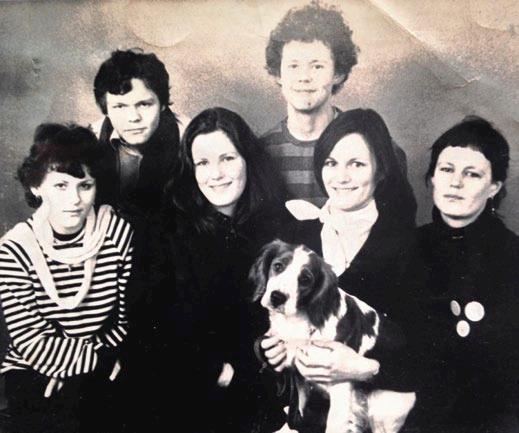
Reade R ’s d igest 23 07•2015 |

Christmas time, then my birthday on the 30th, followed by New Year’s Eve. We were just crackling.
I was taken off by the police, and I carried on drinking in the pub, not really thinking about it much. I ended up being interviewed by a journalist who was hanging around. I thought there might be a small bit on page 36 in the sports news, but lo and behold, there I was splashed on all the front pages.
…My pA rents thought the stre Ak wAs A hoot, but I was constantly trying to turn my back on it. Every time a newspaper phoned up for
another interview, I would just say to tell them to go away, but my parents would say, “Don’t be ridiculous, you’ve got to grab this chance while you can.

I remember 24 | 07•2015
Erika being escorted from the Twickenham rugby pitch after her infamous streak
With her daughter Imogen
You don’t know what’s going to happen.” Quite honestly, I found it very vacuous. I wasn’t selling anything, I just streaked—what more did they want from me?
…After the furore of the stre Ak c AlMed down, I did a bit of journalism for a rugby magazine. I used to interview famous or controversial people associated with rugby, but not necessarily rugby players. I interviewed Nigel Dempster and he was a bit pompous. When I went to interview him, I was absolutely shaking. I remember him trying to catch me out and taking the p*** out of me.
having an affair and we weren’t going to get married or anything, so I went off and became a single mother. We kept in touch and never fell out.
… fA lling in love with M y dutch husbAnd in 1988. We had two sons and spent 17 years building up our business on a farm in Portugal.
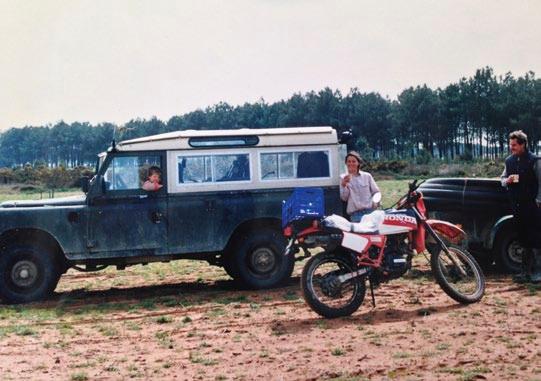
Building up the family farm in Portugal.
The other was Michael Praed, who got famous in Robin of Sherwood and then went on to Dynasty. He was having trouble with his loo overflowing when I phoned him, so half my interview was me telling him what to do, from England to Hollywood.
... i bec AM e pregnA nt for the first ti M e w hen i wA s 27, with my daughter Imogen. It was the best thing that could have happened to me then. She was a passion baby—I was
I’ve worked 14 hours a day nearly every day of my life—even heavily pregnant —hoiking boxes around. Of course, we reaped the benefit by having money, but the marriage broke up. I think a lot of it was about stress and exhaustion. Nobody should do that. Life is for living, not just for money.
… My sister Jessie, the youngest of six children, came to Portugal to stay with me during a difficult
Reade R ’s d igest 25 07•2015 | © c olo R spo RT /R e X / © a ssoc I a T ed n ewspape R s/R e X
Erika’s second child Sam is at the wheel
“As a family, we learned how to build everything from scratch”

part of her life and we had a few arguments, but she was my best friend. But nobody realised that while she was being crazy, she was actually riddled with cancer. It was discovered too late—initially in her breast and very quickly it spread to her brain. Jess chose natural therapies and shunned all the medical advice, and it was too late. She died in 2011, aged 45.
… f or A ye A r A fter M y husb A nd did A bunk, I went through a very deep depression, as he went off with another woman. After that, I was climbing out of it, running the farm
and sending palettes of flowers to Holland.
I paid the mortgage on my own because my husband refused.
I looked after the kids on my own, harvesting flowers and ordering trucks. I had 35 people working there at any one time.
… o verstretching M yself. As a family, we literally learned how to build walls, plaster, put in windows, everything from scratch. I’ve put in my own bathroom—my loo, my sink. I do everything. You look at the builders and think, Well, I can do that. So when they go home and they’re not watching, you try it.
“My parents thought the streak was a hoot, but I was constantly trying to turn my back on it”
r enting out one pA rt of M y house l A st su MM er because I was really broke. I had no bathroom and no kitchen. So I used a bucket as a loo, the contents of which I buried every morning in the field. I was cooking my food outside and had mostly salads. I had an old bath, which I buried in the ground and filled with water in the morning. By the end of the
…
I remember 26
| 07•2015
day, because it’s so hot in Portugal, it would be warm enough to have a bath. So I was bathing outside, in the dark, under the night sky. … b eing in the g A rden with M y d Aughter. She started taking pictures of me. We were having a bit of fun and I was taking my clothes off bit by bit. Before I knew it, I was running around naked and Imogen was saying, “You look lovely, Mum.” The pictures were just for her. Then last year, we
were thinking, You’re famous for your breasts, so let’s raise some money for breast cancer, for Jessie. Let’s try a calendar. Against Breast Cancer showed an interest and so we went ahead. We did it all ourselves with 35 per cent of sales going to the charity. We broke even, with little profit to us, and still have some to sell. As told to Joy Persaud
You can order one of erika’s calendars at erikaroe.com
n O t what YOU were expe C ting?
looking forward to your holidays? here are some baffling examples of customer service and skewed expectations on travel website Trip advisor.
“It’s a great beach, just too sandy.”
“There was a pornographic dVd in the player in our room, and at one point staff members burst in to retrieve it.”
“we had a good meal...and then entered the bar area where we were met by the rudest member of staff I’ve ever come across. we said to her that our group had booked five bedrooms with the hotel... and her response was, ‘what do you want, a medal?’ ”
“The owner kept trying to sell me the hotel and asked if I knew anyone in england who would buy it.”
“we got served Brussels sprouts and tomato soup for breakfast on more than one occasion.”
“If buildings could speak, this one would be screaming, ‘Run away!’”
matadOrnetwOrK.COm
27 r eader’s d igest 07•2015 | FOR MORE, GO TO readersdigest.CO.UK/entertainment

All The Fun
of the Fair
In an age of sophisticated theme parks and electronic thrills, Carters Steam Fair is a nostalgic slice of Victorian fun
by jo carlowe
28
entertainment

Wi T h a hiss of s T eam, the Victorian merry-go-round whirrs to the sound of the pipe organ. Drop a coin into a penny-slot machine, lose your lunch as the steam yachts swing to an almost perpendicular angle, or wield a mallet to test your strength on the Mighty Strikers. But you’ll find no bearded lady or bear in chains. Contrary to appearances, the year is still 2015.
This is car T ers s T eam fair , the UK’s most enduring vintage travelling funfair, run by 67-year-old Anna Carter. The attractions, some from the 1800s, have been restored using traditional crafts such as sign writing, coach painting and woodwork. Where others have converted rides to diesel or electricity, steam remains king at Carters. The overall impact is so effective that the fair remains a favourite among film-makers, providing a backdrop to movies such as The Krays and The End of the Affair.
But while it may offer Victorian thrills to its customer, the fair is very much a modern-day enterprise, with present-day costs and bureaucracy. Rents have doubled since the onset of the last recession, and councils now charge not just for weekends but for build-up and pull-down days. Anna describes it as “19th century work in the 21st century”, and most people ask her why she hasn’t retired.
The fair remains the legacy of Anna’s husband John Carter, who died in 2000, aged just 58. Without his vision and Anna’s drive, many traditional
fairground rides would now be on the scrap heap or behind glass display cabinets. Anna has turned her business into the market leader in vintage funfairs, capitalising on the fact that the general public love nostalgia.
“We’re a village on wheels—an antidote to the digital age,” she says. The description is accurate, describing not just the period rides and traditional showmen wagons, but the Carters’ way of life. One might argue that John had his foot so firmly in the past that the turn of the next century was too much for him to stand.
“John was really fascinated with anything old,” explains Anna. “He collected vintage vehicles, enamel signs, period postcards, horn gramophones, slot machines…”
He even found himself a patron among the landed gentry in the form of Sir John Smith, founder of the Landmark Trust. The concept of Victorian patronage was the perfect fit for John Carter, who looked the part—belted and braced, with a long 19th-centurystyle beard. Sir John allowed them to move into a Medieval hunting lodge on his land in Berkshire.
all the F un o F the F a I r
| 07•2015 30 © pre VI ou S I mage: © Jul I o e t C hart/ a lamy / other I mage S C ourte S y o F C arter S team F a I r

“He sort of rescued my husband,” explains Anna. “He said, ‘I have a house you can live in; it’s pioneering living.’ And it was. It was all wattle and daub and had a moat two-thirds of the way around it.”
Gallopers dating from 1895 and restored by the Carter family
And so the Carters moved in and began promoting vintage car and steam rallies.
back i n 1976, when John went “mooching”—a term he used for locating collectable items—he found an ancient set of Victorian gallopers. (The Carters don’t like the term “merry-go-round” or the American word “carousel”, which “goes the other way around and has pastel colours. We design gallopers in this country. Gallopers go clockwise”.)
The discovery of the gallopers came at a time when the couple had just completed a successful show at Alexandra Palace in London. “We had taken some money for a change,” says Anna. John presented his wife with an unusual dilemma: “Shall we get a deposit on a house? I’ve seen this set of gallopers rotting in a park in Burnham Beeches. What would you rather do: gallopers or house?”
Anna explains: “I’d done the house thing with my first marriage [both Anna and John had been married before, and have seven children between them]. I was bored just living in a house with small kids. I thought the gallopers sounded like much more of an adventure.”
It was a decision that would lead to
07•2015 | 31
Carters Steam Fair. Neither John nor Anna knew much about renovation but decided to learn on the job. “We spoke to old people who knew stuff—there aren’t many of them left.”
By tapping local knowledge and studying old photos, they returned the gallopers, built in 1895, to its former glory. At its centre is a 46-key organ, dating from around 1900.
John next acquired the Chair-oPlane, likely imported to Britain from Germany in the 1920s. Anna painted it and added chains that reputedly came from the decks of the Royal Yacht Britannia. Further stalls were acquired and restored in the garden of their rented house. The gallopers only just missed the gutters as it turned.
“Our house was in the middle of a working dairy farm,” Anna remembers. “The farmer hated the way we lived. He didn’t understand the collecting thing. He put pressure on Sir John to kick us out, so we wintered on the side of the road, living in vans. But Sir John was amazing—he found us some sheds on an airfield and we ended up renting those from him.”
Unperturbed, the Carters began to expand. They discovered some 1921 steam yachts, intricately carved but disintegrating in a Glasgow scrapyard. The restoration process was expensive and included two new yachts built to the original pattern, with timbers imported from Canada.
“At the time showmen didn’t want

| 07•2015 32 all the F un o F the F a I r
The Carter clan: Seth, Rosie, Anna, John, Amber, Zed and Joby at the front
this stuff; they wanted teenage rides. The fairground business had changed from being a family-orientated destination to just thrill rides. Collecting was totally out of fashion.”
By the late 1990s, they had also amassed probably the largest collection of vintage slot machines on a travelling fair. Then, in 2000, John died, shortly after being diagnosed with Burkitt lymphoma, a rare form of cancer.
Un T il T his poin T , the Carters had kept traditional roles. Anna cooked for the staff and “swagged-up” (put up the prizes) on the stalls. In the winter she painted the equipment.
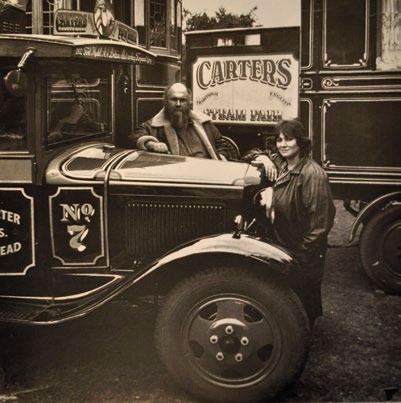
“John and I were a great team. My strengths were his weaknesses and vice versa.”
Anna knew she wouldn’t get outside support. The Showmen’s Guild had previously refused the Carters membership. “Because we’re not born and bred into it, we’re not totally accepted. Traditional showmen tend not to marry out—they’re a very closed society. There’s still animosity.”
But Anna decided she’d carry on if her children wanted to, and they did. “If they hadn’t wanted to, I wouldn’t have tried to persuade them because it’s such a hard life. Today it’s sunny and the ground is dry, but imagine the
mud coming over your wellies. Imagine having to winch a truck through it. We’re so weather dependent. You put in all the work, the men have to be paid, all the bills have to be paid, and then it rains. It’s a very risky business, and a very stupid way to try to earn a living in this country.”
And yet Anna carries on, aware that the risks are countered by the rare freedom her nomadic lifestyle affords her and her children.
“My kids are the last generation that did things,” says Anna. “My children’s upbringing was much more like my childhood. We had that freedom. We used to build camps, go tadpoling, catch newts and wander about the districts in groups. My kids had that
r eader’s d igest 07•2015 | 33
John and Anna Carter with their Model AA 1932 truck
No mod cons: Anna sitting on the steps of her 1948 showman’s living van

would run them to school, sometimes 25 miles. By the time I got to the site, I had to go back and collect them.”
But eventually they found a rhythm. On days when the fair was located too far away, Anna’s mother would have the kids overnight. They did well, all achieving eight O-Levels or GCSEs despite helping to run the fair, and nearly all of them remain involved today.
bUT T he modern W orld is catching up. “I think children have lost touch with reality,” says Anna. “They live in a very strange world. I look at them when they come to the fair—you’ll see a group of teenagers just sitting in a circle with their mobiles out.”
And her own family isn’t sort of childhood. They would meet up at steam rallies and go off exploring, whereas my grandchildren have an electronic childhood.”
The youngest of Anna’s children have lived in the fair their entire lives, foregoing TV, enduring taunts of “gypo” and missing out on regular school during the first few summers. “In the early days I

Keeping the steam yachts stoked
| 07•2015 34 all the F un o F the F a I r

immune: “One of my granddaughters had her own iPad at 22 months. My grandson, who’s 17, doesn’t even ride his bike to school. It takes away their freedom. Everyone thinks their child is about to be snatched if they peddle out of the gate. We’re an antidote to that.
“I expect my own children will carry
on the fair, but I don’t know about the next generation. When you can earn heaps of money sitting in front of a screen, would you really want to be out here in a howling gale at 1am?”
For details of where the fair is playing this month, visit carterssteamfair.co.uk
do you Fit the biscuit mould?
Digestive lovers: you’re a “fun-loving” type, but you wish you were wiser.
Milk-chocolate lovers: you holiday in Spain and are “kind”.
Rich-tea lovers: you’re “shy” and wish you were a bit funnier.
Ginger-nut lovers: you’re feisty and like to holiday in tokyo.
Fruit-shortcake lovers: you’d like to be more patient, but you’re charming.
source: i100.independent.co.uk
r eader’s d igest 07•2015 | 35
Anna’s son Joby runs courses in coach painting
FOR MORE, GO TO readersdigest co uk/entertainment


When Justus Bennet, now 57, a union ombudsman from stockholm, developed facial paralysis—probably brought on by stress—his doctors sent him to hospital for tests, concerned he might have a brain tumour. there medics piped different sounds into his ears as they measured his brain’s responses. the test found no abnormalities, but something strange occurred.
“One frequency sounded like a hammer bashing steel,” Justus recalls. Immediately, his left ear began to ache. Then came a shrill tone, so loud it sounded to him like a scream. But it hadn’t come through the earphones. There was no identifiable source.
The noise-from-nowhere was tinnitus. That was in 1998, and its din hasn’t stopped for more than a few hours since.
A surprisingly large number of people around the globe (including me) experience ringing, chirping, clicking, buzzing or other noises with no external source. Across Europe, approximately ten to 20 per cent say they’ve experienced tinnitus. And the older you get, the more likely you are to be affected.
Tinnitus can be intermittent or constant; soft or loud. And when it makes it difficult to understand a conversation, or follow a programme on TV, tinnitus can drive you a little batty. Dr Michael Seidman, director of Otologic and Neurotologic Surgery at Henry Ford Hospital in Michigan, says he sees some patients who have been divorced, “who can’t work, who are just debilitated by it”.
So what’s behind this infernal, internal racket—and how do you mute the volume?
“Tinnitus isn’t a disease,” explains Deborah Hall, professor of hearing science at the University of Nottingham. “It’s a symptom that can follow from a range of different conditions.”
The known causes vary and include loud noises; hearing loss; physical injury; Meuniere’s disease; certain medications; genetics; even ear wax. Sometimes, the exact cause can’t be pinned down.
At a tinnitus clinic in Oregon, more than 90 per cent of patients were found to have some degree of hearing impairment, even if mild enough to go unnoticed. “The exact pitch where you have your hearing loss is often also where you have your tinnitus,” says neuroscientist Professor Berthold Langguth of the University of Regensburg, Germany.
Because there’s no single cause, “That probably means there’s no one single intervention that’s going to work for all people,” says Professor Hall. But it might also mean that, for people with tinnitus caused by a particular injury or condition, there
| 07•2015 38 stop t H at noise in your H ead
could be more effective treatments than the overall statistics suggest.
current treatments
Dr Seidman advises people who have been told there’s no way to quiet the cacophony to go back to the doctor and ask again. “There are no cures, but there are things we can do to help manage the problem.” He recommends that sufferers start with the simplest approaches and only move on to more complex ones if those fail. Here are several useful treatments available now:
take vitamins. “There was a study that showed more people with tinnitus had a B12 deficiency, for example, and some of those patients got better when they supplemented with the B12,” says Dr Seidman. Other studies suggest that zinc deficiencies can contribute to tinnitus. People with such deficiencies, when given zinc supplements, often report some relief. Adding zinc won’t help, however, if blood levels are already normal. The herb gingko biloba, while often prescribed, performed no better than placebo in several studies.
Quiet the phantom sound. One of the more dramatic reductions in tinnitus demonstrated in a clinical
trial was achieved in the early 1990s with alprazolam—brand name Xanax. The small study found alprazolam reduced tinnitus loudness in 76 per cent of sufferers compared to five per cent on placebo.
“Smart people ask, ‘Does it actually turn down the volume of my tinnitus or does it turn down my annoyance?’ ” says Dr Seidman. Probably a bit of both, he replies. The neurotransmitter that’s associated with anxiety is also the one “that take[s] sound from your ear to your brain”, he explains. Because alprazolam influences this neurotransmitter, “we do think it does turn down the volume”.
Two similar drugs, clonazepam and oxazepam, have also been reported to help some tinnitus sufferers.
Gabapentin, a drug typically prescribed for control of epilepsy, lowered the volume of tinnitus in people who have inner-ear damage caused by exposure to loud noises, reported a study in 2006, but not in those with tinnitus due to other causes.
For people with the dual diagnoses of major depression and tinnitus, two studies showed that the antidepressants nortriptyline and sertraline can sometimes lower tinnitus volume and annoyance. But researchers

“Hearing aids can often help. They don’t eliminate the noise of tinnitus but help hearing”
07•2015 | 39 R EA d ER ’s dI g E s T
caution against prescribing antidepressants for people who aren’t suffering from depression.
Increase normal sound volume. Because hearing loss so often accompanies tinnitus and vice-versa, hearing aids are among the primary treatments. These don’t eliminate tinnitus, but make it easier for some to hear despite it—and they sometimes make the chirping, whistling, whirring and ringing easier to ignore. But because hearing aids can’t eliminate the phantom sound itself, many people need a more comprehensive approach.
Add another sound. Masking therapy pipes a pleasant tone (music or the sound of water, for example) into the ear through a device that may or may not include a hearing aid. It works by distracting from the phantom noise. The greatest successes with masking, according to a study published in 2003, are achieved by matching the pitch of the tinnitus with that of the new sound.
Trick the brain’s noise-maker. A paper from 2013 points to several new masking devices that pipe specific tones into the tinnitus-affected ear, to try to reset the brain so it stops producing that phantom racket. Preliminary
studies conducted by the device manufacturers show promise.
future treatments
According to Professor Hall, there’s a host of potentially better treatments— that may bring the sounds of silence— just around the corner.
New medications. Many experts are excited by the potential of a new drug, AM101, now in clinical trials. One early study “showed that tinnitus loudness significantly decreased with a high dose of AM-101”, says Dr Seidman, who’s involved with the trials. It won’t work for everyone, but if proven safe and effective, it might be the magic bullet for some.
A second drug, AUT00063, is in very preliminary trials. “They’re looking to change the way that the brain deals with sound information at a stage higher up than the ear,” says Professor Hall. Early experiments yielded positive findings.
Vagal-nerve stimulation. The brain deciphers what the ear has heard— but sometimes, as in tinnitus, it fills in the blanks if it doesn’t get enough input. Because the vagus nerve delivers the actual signals from the ear to the brain, researchers hope to use that
“If at first you’re told there’s nothing to be done for you, don’t give up in your search for treatments specific to tinnitus”


| 07•2015 40 stop t H at noise in your H ead
connection to retrain the brain about what’s real and what’s not.
A small vagal-nerve stimulation device (VNS) is surgically implanted in the tinnitus sufferer’s chest and wired to the vagus nerve. As different tones within the wearer’s actual hearing range are played through headphones, the VNS sends mild electrical signals to the brain. Over time, the hope is that the brain will rewire itself to distinguish real sounds from the fake pitches generated by tinnitus. Clinical trials are in progress and preliminary research is promising.
■ Using magnets to reprogramme the brain. The theory behind lowfrequency trans-cranial magnetic stimulation (TMS) is much like the one behind the VNS device. Guided by brain-scan images, large magnetic devices are positioned at specific points on the head to reprogramme
the way the brain processes phantom sound. And when it works, TMS works amazingly well. “Most of the people who had some response still reported improvement two to four years later,” says Professor Langguth. But only about ten per cent of all treated patients reported good improvement. Another 30 to 40 per cent had slight improvements. Professor Langguth and others are working to make TMS more effective for more people.
Justus Bennet, meanwhile, like too many others, although prescribed hearing aids for hearing loss in both ears, was offered no treatment at all specifically for tinnitus.
But it might not need to be that way for him or for others with this annoying affliction. So if your doctor tells you nothing can be done for your tinnitus, don’t give up.
you win: we live in a time when the entire repository of human knowledge fits inside your pocket. you lose: you keep looking at funny cats.
you win: your customers are sympathetic about you having to work at Christmas. you lose: they come in to shop at Christmas.
you win: you drive a solar-powered car. you lose: you’re in Britain.
you win: there’s only one guy in front of you at starbucks. you lose: he orders a double ristretto venti half-soy non-fat decaf organic chocolate brownie iced vanilla chai latte.
sOuRcE: YOuWINYOuLOsE.cO
YOu WIN sOME, YOu LOsE sOME…
07•2015 | 41 R EA d ER ’s dI g E s T
Know The Signs Of Dehydration
By sus A nn AH H ick L ing

Susannah is twice winner of the Guild of Health Writers
Best Consumer Magazine
Health Feature
When the W eather’s Warm, you need to make sure you drink enough (and we’re not including alcohol in that!). But did you know that you lose your sense of thirst as you get older? This means you’re more likely to become dehydrated, making you more prone to falls, heart disease, urinary-tract infections, kidney stones and confusion.
A new study from Loughborough University has shown that drivers who had only a few sips of water an hour made twice as many mistakes as motorists who were properly hydrated— in fact, they made a similar number of errors as you’d expect from someone over the drink-drive limit.
so how do you know when you’re dehydrated?
Warning signs include:
■ Feeling tired
■ Dry mouth
■ Dark urine
■ Losing weight
■ Reduced concentration
■ Headache
■ Constipation
But you might not notice any symptoms at all, so to be on the safe side and make sure you stay hydrated:
■ Keep a glass of water by your side when you’re at home, and sip from it regularly.
■ Form a new drinking habit—for example, when watching TV, always reach for the water glass during an ad break.
| 07•2015 42 HEALTH
© PhotoAlto/Al A my

■ Take a small bottle of water with you when you go out.
■ Always drink a large glass of water with a meal.
■ Eat fruit and veg that have a highwater content, including water melon, grapefruit and cucumbers.
bit like a coffee loyalty card—with a target of eight glasses of water a day. Mark it every time you have a glass of water. Award yourself a prize—a bar of chocolate or a book, maybe—when it’s full at the end of the week.
■ Drink water before, during and after you take any exercise.
■ Draw up a weekly water card—a Quack Question
QIs it true that you only get cold sores when you’ve got a cold?
ANo. Sunlight can also trigger them once you’re infected with the herpes simplex virus. This means you might even be more likely to get them during the summer—when
traditionally there are fewer colds around. Stress can play a part too. But the good news is that sunscreen may help prevent them flaring up. And if you suffer from cold sores on your lips, use lip balm or lipstick with a sunprotection factor—ideally SPF30.
07•2015 | 43































































mEn’s HEALTH: goLf is good for you
expert opinion indicates that this popular, gentle sport is surprisingly beneficial to your health:
you couLd LivE LongEr A study of 300,000 golfers revealed their death rate was 40 per cent lower than for other people.
you wALk morE THAn 10,000 sTEps A us study showed that it took an average of 11,948 steps to get round an 18-hole course.
goLf is A sociABLE AcTiviTy... and friendship is crucial for good mental and physical health.
goLf rEducEs sTrEss your brain will release endorphins after playing, making you feel happier and more relaxed.
iT’s good for your TickEr
Being outdoors doing stressbusting exercise will help lower your risk of stroke and heart attack.
4 Easy Ways To Cut Calories
1Replace your morning orange juice with fruit soaked in chilled water. Try cucumber, lemon, pineapple or strawberries. Save 112 calories.
2Mow the lawn. It might be a chore, but an hour of grass cutting is good exercise. Burn 130 calories.
3Walk for 25 minutes. Every time you park a bit further from the office, take the stairs or walk to the post box, you’re working towards that total. Burn 100 calories.
4Buy a pedometer. Studies have shown that people walk an extra 1,500 steps a day once they have one of these little gadgets. Burn 120 calories per 3,000 steps.
Stop The Clock

Calorie-reduced diets stop the rise and fall in activity levels of around 900 different genes linked to ageing and memory loss, say researchers at NYU Langone Medical Centre in the US. Their experiments with female mice suggest that lower-carb diets in particular can delay the effects of ageing and age-related disease.
Reade R ’s d igest 07•2015 | 45 © shutterstock/ k zenon / © shutterstock/doomu









































































Cartilage and bone health are important for long term wellbeing and an active life. If you are looking for a daily supplement to give you extra support from within, Jointace® has been specially formulated by Vitabiotics’ experts to provide premium nutritional care. With a unique combination of nutrients, and vitamin C which contributes to normal collagen formation for the normal function of bone and cartilage.






















nutritional support for an active life

































ADJONSPRINGP_RD_17-03-15E
GEL or PATCH for direct application. Ideal alongside Jointace® Tabs or Caps
also
Voted 2013 Favourite Glucosamine Product by Boots Customers Fizz Original with Omega-3 Collagen Max Sport
, Superdrug, supermarkets, Lloydspharmacy, chemists, Holland & Barrett, GNC, health stores & www.jointace.com
GB ScanTrack Total Coverage 52 w/e 31 Jan 2015. QUEEN’S AWARD INNOVATION IN VITAMIN RESEARCH
From
*Nielsen
Going With The Flow
Tap into the healing power of water to treat these common conditions*:
Muscle pain A 2007 study reported that contrast water therapy improves recovery from muscle soreness.
Try this: In the shower, turn the tap to hot (up to 41C) for three minutes; turn to cold (10–15C) for about 30 seconds; repeat twice more, finishing with cold water.
Headache Cold water can help to constrict the vessels that dilate in the brain to cause pain.
Try this: Plunge your hands or feet into ice water for up to ten minutes, or place cold compresses on your head. For tension headaches, apply hot, wet towels to the neck and shoulders too.
Arthritis Cold temperatures can reduce pain and inflammation. Try this: Immerse the affected area in ice water or apply ice wrapped in a towel.

Sleep problems A warm bath improved sleep quality among older patients and helped people with insomnia get to sleep in a recent study. Try this: Run a warm bath (36–38.5C —any hotter could wake you up).
*Speak to your GP if you have hypertension, kidney disease, renal failure, liver disease or open sores, as changes in temperature and pressure could exacerbate these problems.
THis monTH’s HEALTH cHEck: mEAsurE your HEigHT
measuring and marking height on a door frame isn’t just for children. In fact, you should do this every year after you turn 50. It’s a good way of assessing posture and skeletal health, especially for women. If you suspect you’re shrinking, ask your GP for a bone-density test, which picks up bone loss.
Reade R ’s d igest 07•2015 | 47
© G A ry John n orm A n/Al A my
Police And Medics: It’s Complicated
By max pem B erton

Max is a hospital doctor, author and newspaper columnist
It’s 11pm on a Fr I day n I ght and I’m standing on a street corner in an undesirable part of town, trying to look inconspicuous. Given that I’ve now been accosted by two policemen, I’d say I’ve failed.
Doctors and the police have a rather complex relationship. Certainly we’re both grateful for each others’ help when dealing with members of the public, but while the police are concerned with keeping the peace and enforcing law and order, doctors are employed to try and make people better, regardless of whether they’re a criminal or involved in criminal activity or not. So our priorities are often not the same.
I’m here to FI nd a woman w I th a plast I c bag. Not much to go on, I know. There have been reports that one of the prostitutes who works this area has got deteriorating physical- and mental-health problems, and the outreach project I’m working for has been asked to see if they can track her down. The only identifying feature is that she always seems to carry a plastic bag with her. I’m waiting for a social worker to arrive before we try and find her to do an assessment, but I appear to have alerted the police patrolling the area to my presence—and it’s looking increasingly likely that I’m about to be arrested for loitering.
| 07•2015 48 H ea Lt H

“And what are you up to then, son,” says one of the policeman as they approach me.
“I’m waiting for a woman with a plastic bag,” I say, only afterwards realising how this could be misconstrued. “Erm, it’s OK, I’m a doctor,” I hastily add. “There should be a social worker here any minute,” my voice trailing off pathetically.
The larger policeman raises an eyebrow. The other policeman rocks forward slightly on his toes. The other police man, slightly older but shorter, rocks forward slightly on his toes. He’s definitely been watching too much Dixon of Dock Green.
I’m looking particularly shifty because I don’t want any of the other prostitutes seeing me talking to the police in case it ruins any trust I’ve
built up with them. I search in my wallet and produce my ID, just as Gill the social worker arrives.
“See, I told you I wasn’t lying,” I say triumphantly, just as a call comes through on the policeman’s radio.
“Apparently there’s a woman causing a disturbance a few streets down—standing in the middle of the street with a plastic bag on her head.”
Gill and I look at each other.
“You reckon she’s the lady you’re looking for?” he asks, and then offers us a lift, on condition that I have a look at a rash on his elbow.
“Can you put the siren on?” I ask.
“Oh, OK then,” he replies. And off we speed, with Gill and I clapping our hands with excitement in the back. Like I said, it’s a rather complex relationship.
© shutterstock/Lisa s 07•2015 | 49
You Won’t Get Sunburnt If You Use the Highest Factor Sun Cream

WHere did tHe mytH come from?
The sun’s ultraviolet rays are what cause damage to the skin. UVA causes ageing (A for ageing) while UVB causes burning (B for burning). Sun cream works by blocking both of these rays. However, the difference between the protection that the different factors offer is actually quite small. For example, an SPF 15 blocks about 94 per cent of the UVB rays,
while an SPF 30 blocks 96 per cent. That’s not a very big difference.
WHat’s tHe trutH?
Making sure sun cream is applied 30 minutes before going out in the sun is far more important than the actual SPF. You must also use enough—most people skimp and don’t. To cover your body, you should use at least one shot-glass worth of sun cream per application. So if you spend the day on the beach, you would need to use nearly an entire 200ml bottle.
so, tHere’s notHing to Worry aBout?
You should absolutely use sun cream to avoid damaging the skin and reduce the risk of skin cancer. But be mindful that there’s more to sun cream than just the SPF. There’s no harm in using the highest SPF, but it’s more important you use plenty and reapply it throughout the time you’re in the sun.
iLL ustration By D a V i D hu MP hries | 07•2015 50 H ea Lt H
FOR MORE, GO TO readersdigest.co.uK/HeaLtH
medicaL mytHs—Busted!

I got my life back...

A new product aims to put an end to the fear and embarrassment caused by problems with bowel control.
For many years Michelle had a secret, something she wouldn’t even discuss with her closest friends or her GP. In the prime of her life she was a prisoner in her own home, afraid to go out in case she “had an accident”.
Michelle suffers from Accidental Bowel Leakage (ABL), medically known as bowel or faecal incontinence. She assumed it was part of getting older, that she would “just have to put up with it” and that there was no treatment to help.
Michelle is certainly not alone. The Bladder and Bowel Foundation estimates one in ten adults will have problems with their bowels at some point in their lives.
Now help and support are at hand with the UK launch of Renew Inserts, a safe and comfortable product that helps prevent Accidental Bowel Leakage.
Renew Inserts are a clean, hygienic alternative to pads; reliable and discreet protection that gives you the confidence to get on with your life.
“So soft and comfortable, I forgot I was wearing them. I can finally go out and feel secure.”
How do they work?
Renew Inserts fit inside your body and help prevent leakage by softly sealing from the inside. They’re easy to use and safe to wear day and night.
Regain control
Renew Inserts are available on prescription and can be delivered to your home or collected from your local chemist.
■ To obtain a sample or speak confidentially with a nurse who understands ABL, call 0800 542 0814 or visit www.renew-medical.uk




ADVERTISEMENT FEATURE
AD-063 RevA
Ethiopian Remembering the
Famine

Thirty years ago this month, the Live Aid concert was staged to raise money and awareness of the famine in Ethiopia, a tragedy that shocked the world. To mark the anniversary, we talk to some of its survivors
by ly NNE wall IS
52
INSPIRE

aN yo NE who Saw th E wo R ldfamouS bbC fIlm of the 1984 famine in Ethiopia cannot fail to remember the deeply shocking images of children and babies starving to death as their powerless, malnourished mothers and fathers looked on.
Those who’d heard there was about to be an aid drop were filmed in the dusty Antsokia Valley, in Alamata and Korem, moving as fast as their sticklike legs and emaciated, fragile bodies would allow. They shuffled in desperation, motivated by grains of hope. But most returned disappointed, as there was only ever enough to feed a fraction of the thousands settled in the valley. Others are seen scrabbling in the dirt, picking up single grains of rice. Babies are seen dying in makeshift hospitals, care and nutrition arriving too late.
choosing which people would make it into the feeding camps, who stood a chance of survival. As you walked about, the eyes of the mothers were on you, watching you, never leaving you as their children’s mouths gasped and gaped. When I think of it now, it still gives me nightmares.”
“The famine Took a million lives and changed The way aid chariTies fundraised”
Michael Buerk’s film was sickening, horrific and absolutely critical. Tesfatsion Dalellew, an Ethiopian man who moved to New Zealand before the famine to work for World Vision Now, the charity that hosted the BBC film crew 30 years ago, recalls, “We were all sitting around, about to have dinner, when the BBC news came on. Well, the whole family forgot dinner. We just sat and cried. When I got a telex from World Vision asking me to come home, I left immediately. The worst thing was
The film prompted air drops from stunned governments within days, and inspired Boy George—who took part in the first Band Aid Christmas single “Do They Know It’s Christmas?”—to suggest a rock concert the following year. Bob Geldof and Midge Ure made sure it happened, and on July 13, 1985, stars such as David Bowie, Elton John, Status Quo, Queen, Roger Daltry, Mick Jagger, Tina Turner and Duran Duran came together to perform. The entire spectacle was beamed around the world by satellite and was watched by an estimated 1.9 billion people across 150 nations, raising an estimated £150m globally for famine relief—rather more than the modest £70,000 Geldof had hoped for.
The famine took the lives of a million people, and changed the way international aid charities fundraised. Parts of Ethiopia are unrecognisable from how they looked 30 years ago, with Antsokia now a fertile river valley where traders and shoppers do business. Live Aid
r E m E mb E ring T h E ET hiopi A n f A min E
| 07•2015 54 © Wor L dVision & A LE x A nd E r Whi TTLE 2014
Abebe Aragaw, who is now a “model farmer”, lost his wife in the famine

money, channelled through charities such as World Vision, helped to build roads and put infrastructure in place. Farms were set up, and healthy livestock now graze on the once-barren land, with the food security the famine generation dreamed of now a reality for the vast majority.
BBC reporter Mike Wooldridge, one of the crew who helped to make the original film, said on a 30th anniversary visit, “I’m impressed by what I see here today. Much has been achieved.”
abEbE aRagaw waS 20 whEN thE famINE hIt. After losing his crops and witnessing his daughter Yeshi starving,
he headed for an emergency feeding centre with his family. “Yeshi was so thin I could count her bones,” he recalls with sadness. “We were so fearful— we didn’t know where we could turn. Every farmer who owned livestock had begun slaughtering their cows to eat. I slaughtered one of my oxen and my neighbour, who was roughly the same age, asked me for some of the meat. He ended up dying, like many others.”
When Abebe left his home for the feeding centre, he expected never to return home. “We didn’t think we’d be alive to do it. A lot of people were so malnourished they couldn’t even walk to the centre, so they were carried
R E ad ER ’ S dI g ES t 07•2015 | 55
Aschalu Mulatu nearly died of starvation, but now runs a beauty parlour (right)

there on stretchers. As we waited, I saw a lot of people dying around us.”
Adebe was given injections and food, while his wife and child went to “wet” feeding centres for treatment. His daughter recovered, but Adebe never saw his wife again.
He was given a job guarding the entrance to the food centre, which he describes as “horrifying”. “One of my strongest memories is of the crowds, many people pushing against us, competing to get into the centre for help. They were desperate, but we couldn’t manage them—there were too many to let in. I watched as they died in front of me. I can never forget that.”
Abebe became one of World Vision’s “model farmers”. After some time he returned home, and with the help of some tools and seedlings he began growing tomatoes and cabbages. As part of the government settlement programme, he was given more land to expand his farm. Soon, on the newly irrigated land that was once a dust bowl, he was growing fruits and vegetables he’d never heard of as a boy— mangoes and bananas alongside onions, coffee beans and papaya.
“As a child, Yeshi ate just traditional maize and soy gum, and occasionally cabbage,” says Abebe. “But my younger children grew up eating completely
r E m E mb E ring T h E ET hiopi A n f A min E
| 07•2015 56 © Wor L dVision
different food, lots of fruits and vegetables, and they are healthy. When I look around at all of this, the trees, I’m joyful. It inspires me. I’m very happy and proud. I nurse these plants like they’re my family. My children don’t want to hear about the famine, but I tell them one day their time may come, so I counsel them on how to sell things to manage when times are tough.”
aSC halu m ulatu waS ju St t EN when she arrived at the emergency feeding centre, unconscious from malnutrition. “I remember it well,” says Aschalu. “I was being spoon-fed, and it’s only because of this that I survived. I remember after I’d recovered seeing many children thrown dead by the side of the road. Then, there was no access to water to drink. Today, families have
clean water in their homes. There’s a health centre and health posts where we can receive treatment. Roads and schools have been constructed too. There wasn’t enough access to education before, and kids could study up to grade 4 or 6 at best. Now they can complete their education.”
Aschalu’s story of recovery is inspiring. She initially became a day labourer after she recovered, then enrolled at a training centre to become a hairdresser. She now runs a beauty parlour in the Antsokia Valley.
“I’m planning to expand this business to other rooms and open a shop that does beauty photography,” the 40-year-old continues. “I know now that it’s possible to change yourself through work, to become prosperous and self-sustainable.”

R E ad ER ’ S dI g ES t 07•2015 | 57
 Almaz Tefera with her grandson. “For every generation in this area, the famine is a benchmark”
Almaz Tefera with her grandson. “For every generation in this area, the famine is a benchmark”
a lmaz tE f ER a wa S a SE v ENyEaR-old oRPhaN when she walked with her older sister to a feeding centre in the Antsokia valley.
“There was an identification process for new arrivals,” Almaz recalls. “Some people were tied with red thread round their wrists and some with green to identify the severity of their malnutrition. I was in the green group and my sister, who was already a mother, was in the red group. She was so very thin —her bones were visible. We both survived but many didn’t, and their bodies were taken away and buried by day labourers who were stronger than the rest of us.
to return home we were given flour, oil and seedlings to take with us. The only vegetables I’d tasted before the famine were potato and sweet potato, but after that I was raised on so many different types of fruit. I was quite fat until I had my children!”
“i’ve worked hard so i can overcome a lack of food if iT happens again”
Almaz is proud of having successfully raised her own seven children, and she now cares for her young grandson.
“We were given porridge and cooked grains, and once we were well enough
“For every generation in this area, the famine is a benchmark. I haven’t even thought of whether my children will face another period like that. I don’t want to see it. But I’ve worked hard so I can overcome a lack of food if it happens again. I’m a farmer and I’m happy with the life I have. Compared to before, I’m very happy.”
if you’re a fan of Channel 4’s Grand Designs, much fun can be had with Grand Designs bingo score a point every time one of these happens:
Bingo! The owners haven’t secured the funding they need to complete the project before they begin.
Bingo! The owners get pregnant during the build.
Bingo! The owners haven’t secured planning permission.
Bingo! The owners end up living in a caravan during the build to save money/because they’ve run out of money.
Bingo! There are problems with expensive custom-made windows.
R E ad ER ’ S dI g ES t 07•2015 | 59
NS
gR a N d d ESI g
b IN go!
Shtml © Wor L dVision & A LE x A nd E r Whi TTLE 2014
SouRCE: CaRINa.oRg.uk/gRaNddESIgNS


Wales
PROMISE
The British Red Cross Society, incorporated by Royal Charter 1908, is a charity registered in England and
(220949), Scotland (SC037738) and Isle of Man (0752). Photo@TaliaFrenkel(ARC) Find out more about remembering the British Red Cross in your will. Call 0800 138 4000 or visit redcross.org.uk/giftinwill today for your free information pack. A gift in your will to the British Red Cross is a promise that help will always be there when someone most needs it. Whatever the future may hold.
TO BE THERE
Send us your holiday snaps—it could win you £400 or a luxury holiday in Turkey!
Family Holiday Competition
Photo

sponsored by
what makes the perfect family holiday photo? Well, here’s your chance to find out! All you have to do is take a compelling picture that sums up your experience of family holidays. We’re looking for unusual approaches, so don’t restrict yourself to portraits of mum, dad and the kids on the beach. Families and holidays are broad categories, so use your imagination!
The competition will be judged by the Reader’s Digest editorial team with the help of professional photographer James Eckersley, and the winning entries will be published in our October issue. Turn the page for entry details and some tips from James on how to take the perfect photo, and go to p64 for details of the fabulous holidays on offer!

INSPIRE

Shot in the Maldives, this photo of my wife brings back happy memories: the blue sky, the perfect ocean and the most beautiful woman in the world

James Eckersley (right), author of “The Last Few”, has work displayed in the permanent collections of The National Portrait Gallery and The Royal Collection. Here he shares his tips for taking great photos and his own favourite holiday snaps.
Photographing family and friends at any time, but particularly while on holiday, gives us a unique record of people we love. This has to be the most important use of photography, leaving us with a lasting legacy of truly happy memories.
Taking great holiday shots doesn’t
require expensive equipment or any in-depth knowledge. You simply need a few pointers, an eye for detail and a bit of luck!
TEll a SToRy
Try to capture the atmosphere of your family holiday. Avoid overdirecting each shot by lining people up and asking them to smile. Instead, allow events to unfold naturally and photograph quickly and quietly. The results will be far more honest.
look aT ThE backgRouNd
It’s easy to spoil a great shot by not concentrating on what’s going on
Head SH o T : lily ecker S ley / Per S onal P H o T o S cour T e S y of Jame S : www. J ame S ecker S ley.co.uk 62 family H oliday PH o T o com P eT iT ion
| 07•2015
behind your subject. Position yourself carefully and look at every corner of your frame. Avoid unnecessarily distracting backgrounds by throwing them out of focus using a small depth of field.
uSE ThE lIghT
Think carefully about the light in your photograph. What impact is it having on your subject and could you use it more effectively? Experiment shooting into the sun. Use some white card as a simple reflector to fill in unwanted shadows. Use your car headlights to illuminate your subject when shooting at dusk. I was trying to explain to my children how to produce an echo from your voice bouncing off mountains. They were naturally keen to try!
how to enter
J Take a high-resolution photo with either a phone or digital camera. After saving it as a jpeg no larger than 2MB, go to readersdigest.co.uk/photo-comp and use the form to upload. Entries must be in no later than 5pm, August 24, 2015.
J There are two categories—one for adults and one for under-18s. The under-18s prize is £400, while the adults winner can choose between two holidays supplied by A Secret Turkey, our sponsor. Turn the page for more details.

J Please put either “Adult” or “Under 18” in the subject line of your email.
Rules: Please ensure that pictures are original, not previously published and taken specifically for this competition. Please include your full name, age, postal address, email address and daytime phone number with all correspondence. If you’re under 16 you must ask your parent or guardian’s permission to enter this competition. We may use entries in all print and electronic media. We cannot acknowledge or return your entry. Contributions become world copyright of Vivat Direct Ltd (t/a Reader’s Digest). Entry is open only to residents of the UK, Channel Islands, Isle of Man and Republic of Ireland. It is not open to employees of Vivat Direct Ltd (t/a Reader’s Digest), its subsidiary companies and all other persons associated with this competition, their immediate families, and relatives living in an employee’s household. The judges’ decision is final. n
R E ad ER ’ S dI g EST 63 07•2015 |

of Turkey
Discover the Ancient Secrets for the adults prize, choose between one of two fabulous escorted tours: the magnificent Turkey Tour for the connoisseur of grandeur, or the Hidden Treasures Tour for the keen explorer

TouR 1
Magnificent Turkey istanbul to antalya
if you like the grandeur of ancient empires and the splendour of the ottomans, set within a modern and vibrant landscape, the magnificent Turkey tour will be ideal for you.

TouR 2
Hidden Treasures
antalya to ephesus
if you prefer less walking, shorter bus journeys and scenic boat tours with precious gems of culture and nature, the Hidden Treasures Tour will be right up your street.
ThE holIday ITINERaRy
n Seven nights’ accommodation in selected five-star hotels.
n return flights and transfers.
n daily buffet breakfasts and evening meals at the hotel.
n daily lunches at different authentic Turkish restaurants.
n welcome cocktail upon arrival.
n modern air-conditioned coaches.
n dedicated, friendly englishspeaking guide.
n entrance fees to all sites and museums visited.
n no hidden extra fees!
The editorial team, along with photographer James Eckersley, will get in touch with the winner. A Secret Turkey will then contact them directly with details of the holiday. More information is available at readersdigest.co.uk/photo-comp
65 07•2015 |
R E ad ER ’ S dI g EST
Theatres Best of British
Outdoor
 By lau R a d E a N -o S good
By lau R a d E a N -o S good
All the world’s a stage, and we have some of the best and most beautiful of the open-air variety right here in Britain
INSPIRE
66
 The stunning view from the Minack theatre, Cornwall
The stunning view from the Minack theatre, Cornwall
Minack Theatre
CoRNwall
Perched high on the cliffs in the village of Porthcurno, Cornwall, this spectacular theatre offers the very best in windswept backdrops.
The famous playhouse was created in the 1930s by visionary theatre lover Rowena Cade, who purchased the minack (Cornish for “rocky”) land for £100 to build her house. After staging several plays at her home, she made more space for the audience in her garden. With the help of just a few men, the Romaninspired seats were carved from granite taken from fallen boulders. Since then—despite an interruption for the war—the theatre has gone from strength to strength.
The Minack runs shows until September, when you can take in a play against the stunning coastline, and even spot a dolphin or two.
■ Visit minack.com for details

Founded in 1932, Regent’s Park Open Air Theatre is also a registered charity

Regent’s Park Open Air Theatre loNdoN
This most regal of green spaces is very much a fixture of summer in the city—and surrounded entirely by parkland, it’s a real treat for culture lovers looking to escape the capital’s busy streets.
B est of B ritish | 07•2015 68

Each summer, almost 140,000 people visit the park to watch one of the four annual plays and to take in the electric atmosphere as the sun sets on the 1,250-seat auditorium. This year, the schedule includes J M Barrie’s Peter Pan and William Golding’s Lord of the Flies . With the stage and seating both
completely uncovered, the actors and the audience are left at the mercy of the British weather— although this hasn’t deterred stars such as Zoë Wanamaker, Jeremy Irons and Benedict Cumberbatch from performing here.
■ Visit openairtheatre.org for details
R E ad ER ’ S dI g ES t 07•2015 | 69 69 © D Avi D Jensen
Performers at Brownsea Open Air Theatre get stuck into some Shakespeare

Brownsea Open Air Theatre doRSEt
The only access to this theatre is by boat, and it’s a trip that thousands of punters have made in the 52 years since its foundation.
Plays are staged on Brownsea Island off the coast of Dorset every year, and volunteers travel there each June to begin building the set. A haven for wildlife, the island is muchloved by locals, who are committed to ensuring it thrives.
“The people who do Brownsea year after year do it for the love of the island,” says BOAT director Denise Mallender. “We’re a registered charity, and we help the work on the islands by holding a regular Shakespeare play.”
This season, Brownsea is the perfect setting for The Tempest, the Bard’s celebrated tale of shipwrecks and storms.
■ Visit brownsea-theatre.co.uk for details
B est of B ritish | 07•2015 70

Rutland Open Air Theatre RutlaNd
This theatre, in the very centre of the country, is home to the Stamford Shakespeare Company, who this year celebrate their 39th year of outdoor plays with performances of Romeo and Juliet and Henry V.
In 1977, with just £78 in the bank, the SSC acquired derelict Tolethorpe Hall, the grounds of which form the beautiful surroundings of the theatre today. The historic settings are a big part of the theatre’s charm, with a natural amphitheatre creating the performance area and interval drinks served in the hall’s orangery.
In all its years, the Rutland OAT has never cancelled a performance owing to rain—and although the stage and actors are left open to the elements, the audience can shelter in the covered auditorium.
■ Visit stamfordshakespeare.co.uk for details

R E ad ER ’ S dI g ES t 07•2015 | 71
The Dell
StRatfoRd-uPoN-aVoN
Where better to spend a summer’s afternoon watching Shakespeare’s work than in his hometown of Stratford-upon-Avon? At weekends until August, the Royal Shakespeare Company’s Avonbank Gardens play host to a packed schedule of lively, free performances from aspiring actors across the country.
“The Dell offers amateur and semi-professional theatre companies, as well as schools and colleges, a fantastic chance to perform at and work with the RSC,” explains Dell co-ordinator Laura Keating, who puts a call out each year to performers looking to step out of their comfort zone and perform at the prestigious venue.
This year, The Dell celebrates its 10th anniversary. Along with plays, guests can enjoy live music events, craft stalls and exhibitions.
■ Visit rsc.org.uk for details

Scarborough Open Air Theatre has a 6,500-seat capacity

Scarborough Open Air Theatre
SCaRBoRough
Sit on top of the natural amphitheatre at this coastal venue and savour the sea air and sights of Europe’s largest open-air playhouse. Created within the natural contours of the land, the stage and seating are separated by a lake, which has been creatively incorporated into the performances in previous years.
“It’s a unique venue,” says Janet Deacon, area director of Welcome to Yorkshire. “The natural amphitheatre
best of british | 07•2015 72

and the lake are simply magical on a balmy summer’s evening.”
The venue was built in the 1930s and enjoyed great popularity as a host for musicals such as The King and I and concerts by the Scarborough Operatic Society, but the curtain fell for the last time in 1986. After major refurbishment, the theatre reopened in 2010, and now plays host to concerts by big-name artists such as Elaine Page and Tom Jones, who are both performing this month.
■ Visit scarboroughopenairtheatre. com for details
Grosvenor Park Open Air Theatre ChEStER
“There’s something truly unique about performing in the open air,” says Alex Clifton, artistic director of Chester Performs, who run Grosvenor Park. “At the glory (or mercy) of the elements, the audience and actors, are all in it together.”
The only full-time professional open-air theatre company outside of London has attracted high-profile performers, and in 2014 the outdoor shows at the theatre were performed to 20,000 people—not bad for an endeavour that’s just in its fifth year.
This season, it’s running a schedule of classic plays. Pull up a deckchair or sprawl out on a picnic rug and take in a show.
■ Visit grosvenorparkopenairtheatre. co.uk for details
do you have a favourite venue to see outdoor plays? Email us at readersletters @readersdigest.co.uk

07•2015 | 73 R E ad ER ’ S dI g ES t
Retired cricketer and broadcaster Michael Vaughan, 40, played 82 Test matches and captained the England team during their Ashes-winning series in 2005.
If I Ruled the World Michael Vaughan
I wouldn’t run the world like I ran a cricket team, for a start. Cricket is a sport, not a business. With a cricket team, there are 11 people to manage and 15 on a tour. I’ve had some experience in business since I retired, and it’s much more difficult and complex. However, in both areas you need different personalities, skills, abilities and styles to succeed.
Ideally, you would have a mix of dependable types and individuals with flair and creativity. You need to be able to trust the people you’re working with, but things won’t work nearly as well if everyone is the same type of person.
I’d show youngsters the value of learning from experience. When I first played in the men’s team at Sheffield Collegiate Cricket Club, I faced West Indian fast bowler Kenny Benjamin in the nets. For a 13-year-old, he was seriously quick and



INSPIRE | 07•2015 74
illus TRATE d by J AME s sM i T h
didn’t hold back. A few years later, Ian Bishop, another West Indian fast bowler, came to play for us and he was even quicker. Facing those two when I was a kid helped me become the batsman I was for England. I could play fast bowlers well and had no fear. You learn so much from being around adults.
I’d have Yorkshire run two cricket teams and put one of them under the control of the England and Wales Cricket Board. Yorkshire is a big county and we produce lots and lots of talented cricketers, easily enough for two teams. You’d have the normal Yorkshire team— like the one that won the County Championship last year—and another where the best young players from the county and other parts of the country would get a chance to play first-class cricket.
I’d encourage people to enjoy what they do. Being happy makes you perform better. Just look at that great Australian cricket team of the early 2000s, with the likes of Steve Waugh, Shane Warne and Ricky Ponting—they seemed to love what they were doing. Our team at that time was too serious; people viewed playing for England as a job. And by the end of my time as captain, I’d also become too serious, too wrapped up in what was going on with the team and my own
captaincy. I’d lost the joy I’d had earlier in my career and didn’t do as well when batting.
I’d emphasise that it’s OK to be yourself. If you’re someone in the limelight, you have two personas —there’s the “you” that everyone else sees and the actual “you”. Every morning at 7am, I go for a fivemile bike ride with my dog Roly, a Cockapoo (a cross between a Cocker Spaniel and a poodle). We go out in the countryside and he runs alongside me. It’s a great way to start the day and exercise the dog. That’s a bit of the “me” no one else sees.
I’d tell everyone to be more positive. There’s so much negative talk these days. Yes, of course there are lots of bad things going on— wars, crime, poverty. But the world is also a great place. I’d tell people to stop complaining about their lot and look at what they’ve got. I’d also teach them to accept life’s ups and downs. You have to deal with the unexpected from time to time, but if you accept that life isn’t always going to be rosy, then it’s easier to handle it.
As told to Crispin Andrews
Michael will be commentating for BBC’s Test Match Special on the Ashes series between England and Australia, starting this month.
07•2015 | 75

Climate change threatens flooding across Europe. But the Dutch are showing how we can meet the challenge
Living with Floods
By david thomas
i N s P i RE

One solution: a floating house that rises with high water, by the River Maas in Roermond, Holland
© Hollandse Hoogte/eyevine
Frank Pluym and m onique, his wife, run a garage in the Dutch town of Nijmegen, just a few miles from the border with Germany. But whenever he has any spare time, Frank can be found at the house he’s building beside the River Waal, on whose banks Nijmegen lies.
On a late autumn morning, Frank stands in what will be a magnificent living room on the top floor of the three-storey building. He walks out onto the scaffolding and looks out past the dyke directly in front of the house to the river waters beyond it.
Frank, 55, loves the view. “I can look at the harbour of Nijmegen and lots of ships come by every day. They’re beautiful to see.”
So how does he feel about moving to his new home? The corners of Frank’s silver moustache curl upwards as he grins. “I feel fine.”
The answer’s not as obvious as it sounds. Frank, Monique and their four children, aged 16 to 23, didn’t relocate by choice. They were happy living and working in the village of Lent, on the north bank of the Waal.
But their old house and garage no longer exist. Nor does the street on which they stood. They were knocked down to make way for a new, 650ftwide channel that splits the Waal in two as it flows past Nijmegen.
This is one of 34 projects making up a €2.2bn programme called Room for the River. Much of Holland lies in the delta region where the Rhine, its
tributaries the Waal and IJssel, and the River Maas (or Meuse) run across lowlying land to the sea. For centuries, these rivers were controlled by hemming them in with dykes, but this is like trying to squeeze a fat man into a corset: sometimes he will burst out.
Far better, the Dutch have now decided, to accept that flooding is a natural phenomenon, but ease its impact by widening rivers to slow the flow of water and create floodplains into which excess water can drain. Thanks to Room for the River, by the end of this year it will be possible for 100,000 litres of water a minute to flow down the Rhine and its tributaries without threatening human lives.
Meanwhile, Holland’s entire existence depends on keeping the North Sea from washing the west of the country away.
Among other moves, it’s currently strengthening the last weak links in its northern coastline by creating the New Hondsbossche Dunes, a huge fivemile project that involves pumping 35,000 litres of sand from the sea floor to sculpt what will become Europe’s longest uninterrupted dunescape— designed to provide protection from the North Sea for another 50 years.
Henk o vink, a s P ecialist in flood control and disaster management for the Dutch government, has his office in The Hague. Would it be flooded if the sea dykes ever failed? “Well, I’m on the second floor, so I would be
| 07•2015 LIVING WITH FLOODS 78

OK,” he says, with a wry smile. “But it wouldn’t be so good for the people below because the building would be surrounded by water. In the Netherlands, 75 per cent of the economy is at risk of flooding. So if we don’t take care of that risk, we might as well all move to Germany.”
The Dutch live within a system of 3,500 “polders”: areas of reclaimed land, ringed by dykes. But this isn’t dry land, as the rest of Europe knows it. Much of Holland is actually below sealevel, meaning that water naturally rises to the surface and even apparently dry land is crisscrossed by canals and drainage ditches, removing the water that’s constantly trying to rise to the surface.
Koen Olthuis is a Dutch architect who’s been building on water for 12 years, designing houses, resort complexes and even a mosque on water for clients in Holland, the Maldives, Florida and Dubai. “Nature is so strong that you should be afraid of it, but if you work with nature, fantastic things will happen,” he says.
“There are three reasons for building on water. The first is space. Architects are always looking for building space, so why not use the water? The second is safety. If a city is threatened by floods, the safest place to be is on top of the water. But the key thing is flexibility. Houses are built to last 70 years, but after 20 years a house no longer suits the way people live. So houses are demolished and you throw away 50 years of their lifespan. However, a floating house can be
07•2015 | 79 M I qu EL G ON za LE z p HOTO
Frank and Monique Pluym at their new house by the River Waal near Nijmegen
moved to somewhere else, where it still has value.”
Olthuis sees his innovative attitude as typically Dutch. “What people forget is that Holland is an artificial country,” he says, pointing to the canals that run through the historic centre of his home town of Delft.
“It acts just like a machine. We pump water out on a daily basis, 24/7, and if you stop pumping, after two or three weeks the water will come up, everywhere in Holland.”
The Dutch have spent centuries learning to live with nature’s attempts to wash them away. As a result, Olthuis says, “The Dutch are flexible. They
know the situation can change at any moment and is changing constantly, and they’re always adapting to that new situation.”
Frank and Monique Pluym are a case in point. “When I first read about the plans [for the river widening] it was a shock,” says Monique. “At that time we couldn’t imagine what the future would be and how it would affect us. But we thought, It’s going to happen, so let’s make the best of it. ”
Having been tHe best PuPils in the art of dealing with water, the Dutch are now becoming its teachers. They’ve had lots of experience of water-borne disaster. Many still remember the 1953 North Sea flood, a storm surge that claimed 1,836 lives in Holland, 326 in Britain and 28 in Belgium.
faciNg thE flood: advicE foR thosE liviNg iN flood zoNEs
• Concrete and tarmac prevent earth from absorbing water, so introduce as much green space as possible in streets, backyards and even on roofs.
• Don’t cover ground floors in wood or carpets that will be ruined by water.
• Raise electricity sockets to reduce the impact of floodwater entering your home.
• Keep your most precious possessions upstairs.
Henk Ovink now spends much of his time in the US, advising city, state and federal officials on the best way to rebuild the areas on its eastern seaboard devastated by Hurricane Sandy.
“Between 1991 and 2000, more than 65,000 people died in natural disasters around the globe and 90 per cent were water-related,” Ovink says. These issues are becoming more important as global warming starts to affect the climate. Not only may sea levels rise, but there could also be stronger storms bringing more water in the way of surges and rainfall.
So just how much risk do we face? And what lessons can we draw from the experience of the Dutch?
| 07•2015 80 LIVING WITH FLOODS


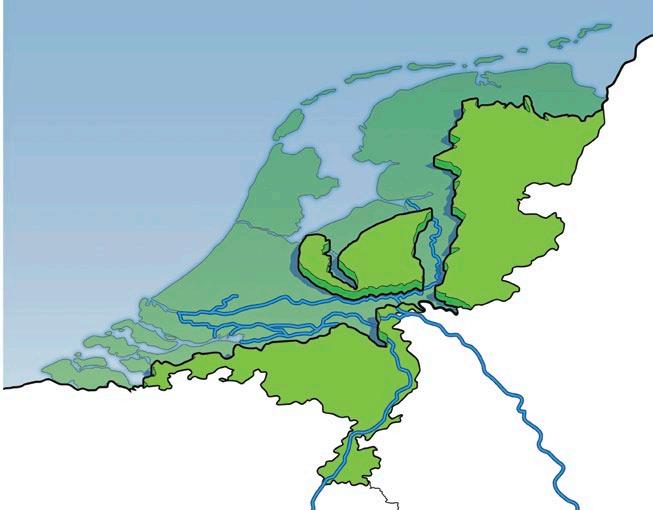
Brenden Jongman is a researcher at the Free University of Amsterdam who studies the risk and cost of flooding and advises international agencies. In April 2014, he contributed to a report that concluded that the cost of flooding in EU nations could rise from the current average of €4.5bn a year to €23bn by 2050.
As Jongman explains, “In much of the EU, flooding from the sea isn’t a big issue, in the way that it is in the Netherlands. There’s a higher risk of river floods, and they will be much worse if sea levels are higher and the water can’t flow away.
“The floods in June 2013, when the Danube and the Elbe flooded at the same time, cost €12bn. In Italy, the Po
River floods. There are floods in Croatia and Albania, in Spain and Portugal. France has been lucky. Paris is floodprone, but it hasn’t suffered a serious flood since 1913. But the defences are no better than they were then and another Paris flood on the same scale would cause €40bn damage.”
s o wHat can be done to Prevent it? “We need to talk about strategies, collaborations and solutions, instead of just crying, ‘Help!’ ” says Henk Ovink. The Dutch have a 100-year plan for flood prevention, which involves everything from massive projects such as Room for the River to smallscale urban initiatives. These include storing flood water in underground
07•2015 | 81 map by willy R yan; Sou RC e: Dut C h m ini S t R y fo R tR an S po R t, tR affi C an D w ate R m anagement
no R t H sea
ge RM any
belgiu M
River Waal neder Rijn iJssel
amsterdam Hondsbossche Dunes Overdiepse Polder ● ● ● ● ● What would remain of the country What would be under water the Hague Rotterdam watER woRld: thE shaPE of thE NEthERlaNds without RivER aNd sEa dEfENcEs
River Maas Nijmegen
garages, office basements and “water plazas”—recreation areas with features such as sunken basketball courts that can act as miniature reservoirs.
But to make these measures effective, Ovink says, governments have to talk to the people who are going to be affected by possible floods, or by the measures that are taken to prevent them. “Always keep doors open and don’t exclude people just because you think you already know everything. You don’t.”
Stan Fleerakkers, a 44-year-old farmer from Overdiepse Polder in south-west Holland, knows just what it feels like when authorities don’t bother to talk to the people. Several years ago, he and some of his neighbours went to a routine meeting with local government officials. When they arrived, they were shown a map on which Overdiepse Polder, which lies between two branches of the River Maas, had been coloured in blue. As part of the Room for the River programme, the dyke protecting their land would be lowered from 20ft to 8ft in height. Once the river rose above that, their land would be flooded.
“It was a plan made in an office,” Stan says. “Someone who didn’t know us said, ‘When the river needs space it will flood the farms. We can evacuate the people and the animals, and repair their houses when they come back.’ ”
Seventeen farms would be affected. Not surprisingly, their owners were shocked. But, like the Pluyms, they
decided not to fight the plan, but to turn it to their advantage.”
Two of the farmers then came up with an idea to copy the first of all Dutch flood defences: the “terps” or large, flattopped mounds on which farmers placed their homes and stables 1,000 years ago. If terps had kept farmers’ families and livestock safe from flooding then, they could protect Overdiepse Polder now.
Now the government started to listen. It approved the farmers’ plans and agreed to pay for the building of eight terps, each 6m high and covering two hectares.

Half the Polder’s farmers left the area completely, but the Fleerakkers were among those who stayed. So now, their old farm lies buried under one of the terps while they live and work on top of another.
Their new farmhouse is a stunning open-plan home, and their 120 milking cows live in a brand-new cowshed, where they’re milked by two computerised robots. As Stan jokes, “The cows give more milk and they’re much healthier—maybe because they never have to see a grumpy farmer!”
But he, Yvonne and their three kids
| 07•2015 82 LIVING WITH FLOODS
Stan Fleerakkers and his family at their new farmhouse built on raised ground on the Overdiepse Polder

only arrived at this happy ending after years of complex financial negotiations, and even then, they had to triple their bank loan to finance all their new buildings and equipment.
“Stan is very positive. I had nights when I couldn’t sleep,” says Yvonne. “There were always new difficulties. But we kept going. Now I’m very glad we decided to stay here. I think it’s a beautiful spot for a family. We’re the first farm on the street, so I can see the children when they come over the bridge after school and I can start making their tea.”
Asked what advice they’d give to people in other countries who may be facing similar challenges as the need for flood defences grows, Yvonne repeats what’s now become a Dutch mantra: “You have to be flexible in your thinking.”
Henk Ovink agrees: “We have to change—there’s no other way—but I feel optimistic.”
Koen Olthuis goes even further. “If you’re threatened by water, the safest place to be is on the water, so live with it. The future’s not green. The future’s blue!”
07•2015 | 83 M I qu EL G ON za LE z p HOTO
FOR MORE, GO TO REadERsdigEst.co.uK/iNsPiRE

travel & adventure 84
Citizens of Seville bid a festive farewell to the Hermandad de la Macarena as pilgrims head off to El Rocío
Once a year, a million pilgrims converge in the village of El Rocío to join
Spain’S Wilde St Party
By l ia Grain G er


Ana Gomez Mendoza hikes up her floor-length polkadot skirt and leaps into the back of the horse-drawn carriage. At 44, the former construction-company boss looks tough enough to rope a steed, even in her full-length, form-fitting, white-and-lavender outfit.
I sit across from her, my own red ruffled skirt mixing with hers at the ankles. It’s just daylight, the Andalusian sun still low and cool, and in the sparse pine forest that surrounds us, sleepy Spaniards are striking last night’s camp and getting their horses on the road. Soon the wide sandy path is crowded with carriages and carts. Each is filled to bursting with pilgrims: women in flamenco dresses, men in finely tailored grey riding suits and wide-brimmed bolero hats, children too in traditional costume.
Everyone shouts greetings to Ana —“ Hola guapísima! ”—and men on horseback drinking tiny bottles of beer called botellíns salute us as they pass. It’s barely 8am.
“
Venga niña ,” she says in her thick Andalusian accent, passing me the boozy breakfast beverage. “You’re riding with us.”
The Romería del Rocío is Spain’s biggest religious pilgrimage, drawing Spaniards from across the country to the tiny southern town of El Rocío. Most of the year, the Andalusian village looks like a deserted Hollywood Wild West set, but each year in late May or early June almost a million pilgrims descend on El Rocío.
They come to pay homage to the Virgen del Rocío, a sacred effigy of the Virgin Mary. Legend says the religious doll was found in a tree trunk back in the 15th century, and she’s been worshipped ever since. Evidence suggests that the tradition of coming to El Rocío for an annual period of celebration likely predates Catholicism.
I’m about to say tea, but then notice that Ana is emptying a litre of gin into a battered tin teapot. She mixes in a dash of lemonade and pours a healthy portion into a plastic cup. ,
“These are all my people,” says Ana, standing and blowing kisses. She turns to me with a sly grin: “You want tea or beer?”
Most pilgrims travel in brotherhoods, large groups from a town or neighbourhood that eat, drink and ride together. Each brings its own statue of the virgin housed in an elaborate shrine pulled by bullocks. Pilgrims generally start their trip mid-week, arriving in El Rocío on Friday and then partying until Sunday night.
The weekend reaches a climax in the very early hours of Monday morning, when men battle for the honour of carrying the Virgen del Rocío around town to greet the virgin effigies of each brotherhood. It’s a religious affair, but one fuelled by alcohol, merriment and a healthy dose of ribaldry (rumour has
spain’s wildest party | 07•2015 86 p hoto, pre V io U s spread : lia grainger

it that an Andalusian baby boom arrives nine months after the Romería del Rocío each year).
As a foreigner and first-time pilgrim, I reflect that celebrating the Catholic Church’s ultimate symbol of purity with what’s arguably Spain’s wildest party seems a tad contradictory. But no one on the road seems concerned, so I go with it, down my “tea” and ride into a dusty haze of gin-fuelled celebration with the unlikely goal of holy worship at the end of the road.
“T he most famous woman in El Rocío is the Virgin,” says Jaime Guadiaga Dominguez, a rosy-cheeked Sevillano. We’re riding in La Hermandad de la Macarena, a brotherhood of some 815 pilgrims from a neighbourhood in central Seville. They’ll travel the
Eating on the road: cheeses, cold cuts, olives and stews—and always something to drink
40 miles from their homes to El Rocío over three days, and Jaime will spend most of them in Ana’s carriage.
“But the second most famous is Ana,” he adds, laughing. Ana just smiles, then begins to sing: “I’ve spent a year waiting for this moment…”
Ana has indeed spent the past 12 months sewing seven days’ worth of outfits, planning elaborate meals to be shared with the brotherhood and preparing her horses for the journey. Her coche de caballo—an eight-person carriage pulled by horses—is modest compared to some. A group of at least 20 passes us in a jardinera , a flatbed on wheels outfitted with a long table and benches that’s pulled by a tractor. They’re eating a fabulous spread of
07•2015 | 87
p hoto: Flip Franssen/ h ollandse hoogte
cheeses, cold cuts and olives, and drinking from stemmed glassware. A man leans over the edge to pass over a botellín. I reluctantly take it—if I’m not holding a drink, another offer is about three seconds away.
We ride for several hours as friends hop on and off. When we roll up to an old man in a straw hat, Ana begins shouting, “Pepe, get up here!”
“No!” shouts Pepe. “I said I would walk the whole way. It was my promise.” But he jumps on anyway. With a shock of white hair and crinkly blue eyes, 70-year-old Pepe proudly informs us he’s the cohetero , responsible for lighting loud fireworks to warn towns of our arrival. He shows us his metal firework launcher and we all admire Pepe’s handiwork. Then someone asks for water. “Water is for washing and horses!” Ana responds.
Around noon, the procession slows as we approach the river Quema. Most of the 140 brotherhoods will pass through its shallow riverbed, stopping to salute their own effigy. Pilgrims wade into the water, holding up skirts and trouser legs. Soon there are hundreds of us surrounding the cart bearing La Hermandad’s tiny statue of the Virgin Mary. The crowd grows silent, waiting. An old woman raises her arms and begins singing, verses of adoration for the beloved virgin. Pairs of women begin dancing in the water, splashing and smiling with arms raised, hands soft and flower-like.
When all is silent again, a tall man

on horseback splashes forward until he’s nearly face to face with the little statue. He takes off his hat and raises it in the air towards her.
“Viva la Virgen de la Macarena!” he bellows.
“Viva! Viva! Viva!” responds the screaming crowd.
The procession begins to move again, but Ana steers our cart out of the line. “Lia’s new here—she needs to be baptised!” she shouts, and calls to Jaime to grab a cup.
I climb down into the river and Jaime follows. “I baptise you Lia, duchess of lynxes and rabbits!” he says, laughing at his own nonsense. Then he pours the icy river water over my sweaty skin.
spain’s wildest party | 07•2015 88 p hoto: re U ters /Marcelo del p ozo

“You’re Rociera now!” says Ana.
I reflect again that the pilgrims seem to apply the rules of church rather liberally. I’m not Catholic but am happily welcomed to the trail.
We emerge from the river and find ourselves in the Doñana, Western Europe’s largest nature reserve. Our path is bordered on both sides by the ashy trunks of towering pines, and through them we spot an old man, bent over a giant steaming cauldron. Ana steers over to his makeshift kitchen.
“I’m Rafael,” he says with a gentle smile, then lifts the lid to reveal his creation: Olla Falsa, a traditional Andalusian stew of chick peas, garlic and laurel. He’s waiting for some friends, but of course he insists we eat.
Most of the brotherhoods will pass through the shallows of the Quema River, a joyful part of the journey and another celebration of the Virgin
“This isn’t Romería,” Rafael says, spooning the stew into bowls. “Before, it was more real. We came without preparation, we slept under the stars.” It’s true. Today, the majority bring specially built trailers called carriolas that are pulled by giant tractors, and their mass mixes with the horses, clogging the trail.
That night, the mechanical drone of the carriolas’ electric generators drowns out the singing of Ana and her friends, though they don’t seem too bothered. “Life advances,” says Pilar, one of our group.
07•2015 | 89
I drag my air mattress, mosquito net and sleeping bag into the darkness until the camp is just a glowing hum in the distance, and I’m asleep almost instantly.
When I wander back early the next morning, I tell Ana and her friends, “You can give away my spot in the carriage”. Today, the final day on the road, I’ll travel as the first pilgrims did, on foot.

The effigy of the Virgin Mary, said to have been found in a tree trunk in the 15th century
Within hours of setting off, the sun beats down and a steady wind whips ochre dust into the air. After several hours of trudging, a wide bridge emerges on the horizon. Beyond it, the faint whisperings of a distant town appear: El Rocío.
And what a sight it is. The usually silent streets are bustling with carts and riders, loud men selling ice and bread over megaphones, women and men loitering on every corner, dressed to be seen. The streets are lined on both sides with whitewashed homes, and every front patio is overflowing with its own boisterous party.
I witness numerous chance reunions, friends joyfully bumping into one another, shrieking and hugging after a long year apart. Plates of fresh blanched prawns are everywhere, and the strong Spanish sherry known as
Manzanilla flows like water. Everyone has been waiting a year for this weekend, and their determination to make it count—and to make it spectacular —is palpable.
Friday and Saturday pass in a blur of fiestas. Sunday night arrives in a flash, and I find myself invited into the rented house of an accountant from Seville named Sophia. This is her third year in El Rocío, and she and 30 of her friends sleep eight to a room in bunk beds, hats and ruffled dresses exploding from every corner.
“It was a lot more organised on the first day,” says Sophia with a throaty Manzanilla-laced laugh. She walks me to a framed portrait of the Virgen del Rocío in the hallway surrounded by glowing candles. Even in the midst of the party, faces pause and grow sober as they pass her image.
“We come to El Rocío first to see the Virgin,” explains Sophia solemnly. Then she brightens: “After that, we come to eat, drink and live with our friends for a week.”
We head outside, where her roommates and then some have jammed themselves onto the tiny terrace. Huge trays of home-cooked delicacies begin emerging from the kitchen: serrano
spain’s wildest party | 07•2015 90
p hoto: © age F otostock/ a la M y
ham croquettes, cups of steamed snails in hot fennel and mint scented broth, slabs of garlic slathered pork.
It’s midnight on Sunday, so with drink in hand I make my way with the throngs now flooding the village’s main plaza to do what we’ve all come here to do: get a look at the little lady.
It doesn’t happen right away. I stand in the crowd tens of thousands strong for more than three hours. We are watching as brotherhood after brotherhood files solemnly past the open doors of the glowing white church. A brilliant light shines from within, and if I strain my eyes, I can see the gold alter in front of which She sits.
Finally, the local Almonte brotherhood approaches the doorway, and without warning hundreds of men begin brawling for the honour of carrying the statue. After about 15 minutes of struggle, a group breaks the Virgin free from grasping arms and swinging fists and emerges triumphantly bearing the float into the pulsating crowd. Grown men weep and mothers fight their way towards the float with babies in
extended arms, desperate for their offspring to bathe in the Virgin’s healing light. It makes sense that this is how the week should end, El Rocío as one roiling crowd, tearfully, joyfully praying for its own salvation.
On Monday morning I find Ana and her friends packing up the cart, prepping for the departure the following day. Like everyone else in village, they’re talking about the Virgin.
“We don’t try to get close to her, but somehow, she comes close to us,” says Pilar. She suddenly seems like a young girl as she describes it. “It’s a moment of great happiness. It’s why we do the journey.”
This is what everyone says. Yet I’ve seen things this week—the way Ana is adored, Rafael’s generosity to strangers, how Sophia and her housemates care for one another—that make me think the Romería del Rocío is so much more. It’s a celebration of life that endures even in the face of great national hardship, and everyone is welcome, so long as you’ll raise a glass to the Virgen del Rocío.
a su G ar hi G h
when 47-year-old suzanne Basham called the police to report a theft, she landed herself in a spot of trouble. as officers arrived to look into Basham’s claim that she’d been ripped off, they discovered her £40 purchase had in fact been for what she thought was crack cocaine—which had turned out to be sugar—and the person she was reporting was her drug dealer. she was promptly arrested.
source: huffinGtonpost.co.uk
r eader’s d i G est 07•2015 | 91

Destination Wedding Paying For a
ON THE BIG DAY, THE BRIDE AND GROOM
, will have only one question to think about, and one answer to give: “I do”. But in the months leading up to a wedding, especially a wedding overseas, the happy couple and their families will have reams of questions. So here’s a list of key points to help prepare for a dream destination wedding from UKForex.
Find the perfect planner
In the UK, hiring a wedding planner is a great way to make sure the ceremony and reception match the bride and groom’s taste. Overseas, a wedding planner is even more important. Not only will they organise the decorations, food, drink and entertainment, but they should provide a checklist for documentation and a timeline of legal procedures.
Use a money transfer service
Paying for wedding costs in a foreign currency will incur fees and poor exchange rates if you use the bank. You’ll nd lower fees and better exchange rates with FCA authorised money transfer service, UKForex.
With our smart systems available online 24/7, you can transfer money at any time – giving you the freedom to support your loved ones even when you’re abroad with them. Be sure to register before you start incurring costs.
Iron out the legal details
Marrying abroad can cut the overall cost – sometimes by thousands of pounds. However, while certain costs are reduced, unfortunately other expenditures may increase. Legal advice, paperwork translation and short-term residency requirements
ADVERTISEMENT FEATURE
have to be researched, translated, completed and paid for.
Invest in insurance
Taking out a specialist insurance policy for a wedding will give the couple peace of mind. While a destination wedding brings with it the promise of beautiful weather, regrettably there’s no way to guarantee blue skies.
Choose the right photographer
e lucky couple might need to spend a little more time and money nding a photographer who really suits their style. For example, nding a reportagestyle photographer in Eastern Europe may take up more time and more of the wedding budget than in the UK.
Consider a package deal
Tour operators o er a range of package deals for overseas weddings. Much like a planner, they can help with the preparation and organisation for the upcoming

ceremony. ere is a premium to be paid but purchasing a package deal is a great way to take a weight o the shoulders of the happy couple.
While it may take a little more planning and research, helping pay for a destination wedding is a rewarding endeavour – and not just for the lucky bride and groom. For a family, it’s a great way to invest in the shared joy of togetherness that a marriage brings.
MONEY
Call us today on 0207 614 4136 and one of our experts will be able to discuss your requirements
By Catherine Cole
My Great Escape: Icelandic Adventure
Sharon Haston from Falkirk marks a special occasion with a dip in Iceland’s Blue Lagoon

Catherine has danced in Rio, been microlighting in South Africa and hiked the mountains of Oman
Tell us about your favourite holiday (send a photo too) and if we include it on this page we’ll pay you £50. Go to readersdigest. co.uk/contact-us


My husband Robe Rt had his 50th bi Rthday co M ing up. Where could we go to celebrate? Somewhere different; somewhere we could embrace the coldness of a December birthday instead of seeking the sun. Iceland’s capital Reykjavik seemed to tick all the boxes.
We loved the Golden Circle tour around southern Iceland that took in the jaw-dropping Gullfoss waterfall and the Þingvellir National Park. We also saw boiling, spouting geysers—we watched the Strokkur geyser erupt every five minutes for about half an hour, unable to drag our eyes away. We were mesmerised at this display of the raw power of nature that is—amazingly—just at the side of the road.
We tried to see the Northern Lights on the Garður Peninsula, but unfortunately they didn’t want to come out to play. Standing at the edge of the peninsula, sheltering in front of an old fishing boat, staring at a clear sky full of stars, was simultaneously eerie and enchanting. Fortunately, our ticket is valid for two years to try again.
Lazing in the hot water of the geothermal Blue Lagoon pool was the best part of our trip. Surrounded by dark volcanic
| 07•2015 94 travel & adventure
photos courtesy o F sharon haston
ash, the pool’s setting is otherworldly. We swam up to the bar to sample Icelandic beer, enjoying the surreal experience of bathing outside while the temperature was -2C.
Reykjavik’s city centre is also interesting, with a blend of modern buildings and wooden houses painted in a variety of colours. We even managed to fit in a spot of culture with a visit to the National Museum, which details the history of Iceland.
It was freezing cold, but that was part of the charm. It even snowed during our visit, which made it even more magical.
I’m holding onto my ticket to try to see the Northern Lights again and I won’t wait two years. To quote Arnold Schwarzenegger: “I’ll be back…”
■ an iCed dream
Flights to Reykjavik from London start from £33.99 one-way with easyJet (0330 365 5000; easyjet.com). Gray Line organises Golden Circle tours (+354 540 1313; grayline.is).

postcard from… the Isles of s c I lly

Officially the warmest place in the UK, the Isles of Scilly have that “I can’t believe I’m in England” quality. Thirty miles off the coast of Cornwall, Scilly is an archipelago of five unspoiled islands, and even the short plane journey across the aquamarine water (it might be the Channel, but it doesn’t look it) will have you reaching for your camera.
Head to Tresco, home to the Abbey Garden with a collection of more than 20,000 exotic plants, or St Mary’s, Scilly’s largest island for a staycation with a difference. And if you just want to unwind on beaches that look like they’ve been imported from the Caribbean, you’re in the right place.
■ a StayCation With Style
Skybus flights to St Mary’s in the Isles depart from Land’s End, Newquay and Exeter from £70pp (01736 334 220; islesofscilly-travel.co.uk).
07•2015 | 95
Things To Do This Month

par I s I n two m I nutes
■ d o: Bastille Day. July 14 is a big deal in France. The day marks the anniversary of the storming of the Bastille, or the start of the French Revolution. Expect fireworks, costumes and live music in Paris’ Place de la Bastille (en.parisinfo.com).
■ stay: Peninsula Paris. The luxurious five-star hotel is vintage Parisian glamour at its best. A stone’s throw from the Arc de Triomphe, the hotel boasts vast rooms and suites that give a nod to the group’s Asian roots. From around £800 a night (+33 1 58 12 28 88; paris.peninsula.com).
■ do: Louis Vuitton Foundation. Designed by architect Frank Gehry, the cloud-like structure of the new Louis Vuitton Foundation has caused some controversy, but it’s worth a look for its huge glass sails. Find it in the peaceful outskirts of Paris (fondationlouisvuitton.fr).
short/long haul: the w I ld s I de s ho Rt: London to Venice Belmond’s classic route takes you across the French countryside in true Orient Express luxury. Enjoy brunch, a four-course dinner and a cosy night’s sleep on this day-andnight journey before arriving among the canals in Venice—from £2,050pp (0845 077 2222; belmond.com).

Long: Moscow to VL adi Vostok
The ultimate Trans-Siberian journey runs from Moscow to the edge of Siberia. Pass through the wild tundra of central Russia as you journey from Europe to Asia on this once-in-alifetime experience—from £9,995pp (01347 808 680; planetrail.co.uk).

travel app of the month
Field trip, Free, ios, android. This app helps users travel using personal recommendations from different online sources. It points out hidden gems depending on location, gives short blurbs on eateries, museums or sights you might miss (fieldtripper.com).
| 07•2015 96 trave L & adventure
FOR MORE, GO TO readerSdiGeSt.Co.uK/travel-adventure
© Bernhard rI chter/shutterstock
3 For Landlords TOP TIPS
1Draw up a good quality tenancy agreement
Although it’s possible to have a verbal rather than a written tenancy agreement, getting your tenant to sign a good quality, written agreement before he or she moves into your rental property is an absolute must. Verbal agreements can be a recipe for disaster. Without a written agreement, arguments are bound to ensue, as there’s no record of the terms you and your tenant have agreed to. What’s more, you cannot take a deposit without a tenancy agreement, and you’re bound to encounter problems if you need to evict a troublesome tenant.
2Know your obligations
If you’re letting property, you’ll be subject to a whole raft of rules and regulations that you
must comply with, or face severe penalties, including jail. Landlords are responsible for maintaining a property’s structure and exterior; its systems for supplying water, gas, electricity and sanitation; basins, sinks, baths and other similar installations; and heating and hot water equipment. Other obligations include providing an Energy Performance Certificate for the property; protecting any deposit using one of the governmentauthorised schemes; and taking fire safety measures.
3Take good advice early on
If landlords are unsure about any aspect of what’s involved in creating and managing a successful letting, they’re urged take expert advice. Self-help guides are available, which provide plenty of background information, and where the situation demands it, specialist solicitors who practise in this area can be consulted. There are also various landlord associations that provide advice and support for their members, so it’s worth checking out the benefits of membership.
To get started renting your property with the Landlord Saver Pack, visit http:// readersdigest.lawpack.co.uk/lsp
ADVERTISEMENT FEATURE
LEGAL
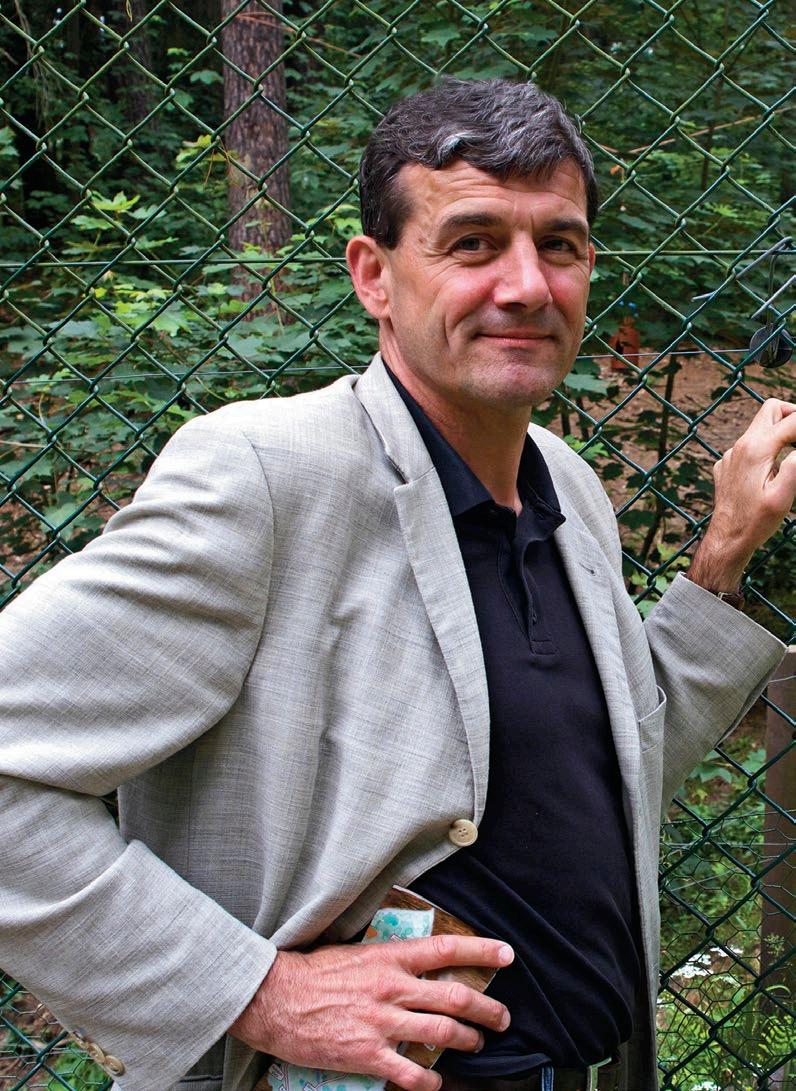 photo: lia grainger
Hertwig at Bear Park Müritz, north of Berlin, which he helped design
photo: lia grainger
Hertwig at Bear Park Müritz, north of Berlin, which he helped design

Carsten Hertwig’s life’s work is to free animals kept in appalling conditions and transport them to happy new homes
Bears Saving Our
By Lia Grain G er
99
ari and rina paced franticaLLy back and forth in their tiny concrete enclosure. The two bears were dirty and dishevelled, hair matted and falling out from years spent in their filthy cage. They’d been suffering in this mini zoo in the south of Kosovo for far too long, their only stimulation the barking and whining of wild dogs and other distressed animals in nearby cages.
Carsten Hertwig paced in the car park outside, anxiously waiting for the signal to enter. As the head of animal welfare organisation Four Paws’ bear division, he was responsible for the rescue of Ari and Rina, and he knew the zookeepers weren’t going to give up their prized animals freely.
Carsten gave a sign and a team of Kosovo police charged in first to handle the disgruntled owners, as journalists jostled to get a decent shot. As Carsten nervously waited, more police with bigger guns began streaming into the zoo. What if something goes wrong? thought Carsten. Finally, an officer emerged, rifle in hand.
“It’s safe,” he exclaimed, and Carsten dashed in, desperate to get the animals out.
There were Ari and Rina, huddled in the cage, terrified and shaking. On Carsten’s command, the two bears were tranquilised. Then, with a set of bolt cutters, he cut open the cage’s lock and entered. With the help of his team, Carsten gently loaded the animals onto a pair of giant stretchers and carried
them to the two ambulances waiting outside. He stroked Rina’s furry cheek as he bore her out of her nightmare.
“It’s OK,” he whispered, “you’re going to a better place.”
Today, Ari and Rina live at the Prishtina Bear Sanctuary in Kosovo, where they happily roam, forage and play in the reserve’s 40 acres of pristine wilderness.
As the director of the bears division of Four Paws for the past nine years, Carsten has made freeing Europe’s captive bears and transporting them to happy new homes his life’s work.
“This is my destiny,” says the lanky 48-year-old as he strolls down a path at Müritz Bear Park, a bear reserve two hours north of Berlin in Germany and one of five Four Paws bear sanctuaries across Europe that he manages. As he walks, a female European brown bear pokes her furry head out of the dense foliage to get a look at her saviour, then begins pawing at the soil.
“Mascha!” exclaims Carsten, bending his tall frame to peer through the fence. “See how she loves to dig!”
Carsten knows the habits of each of the 68 European brown bears under his care like they were his own kids. It’s a number he’s worked tirelessly to increase, and one that promises to grow as he sets his sights on captive bears beyond Europe.
“After nearly ten years, I can see success,” says Carsten, gazing at Mascha playing in the dirt. “But there’s still so much to do.”
| 07•2015 100 saving our bears
carsten rememBers the exact moment that bears became his destiny.
It was a chilly February afternoon in 2005. A born nature lover, Carsten had grown up in the German city of Ulm by the Danube. Eventually, he made his career designing and managing the interpretive centres of several prominent German nature reserves, including one for the World Wildlife Fund.
But on this particular morning, he found himself between jobs. Casually
He began studying the laws governing bear keeping in countries across the European Union. He learned that in Germany, keeping is still legal, but only if the bear is afforded a certain amount of space and correct security measures are taken. He quickly identified many small zoos keeping bears in inappropriate conditions. His crusade was helped by the fact that German public perceptions about captive bears are so negative that many keepers actually requested Carsten confiscate their bears.
Carsten found bears Chained in tiny Cages next to restaurants, forCed to perform triCks and drink alCohol
flipping through a Hamburg paper, Carsten happened upon an advertisement that set his heart racing. A sanctuary for bears rescued from captivity was to be built in Müritz National Park, just an hour’s drive from where he lived with his wife. They needed someone to run the operation.
I’d be perfect for this , thought Carsten, and after several interviews, park management agreed.
Carsten was responsible for the design of the 40-acre park and its centre, but he also had another responsibility: finding and rescuing the bears that would call it home.
But in countries such as Romania, Bulgaria, Serbia, Croatia and Ukraine, public attitudes to private keeping are far more accepting, and owners are much less willing to let their animals go without a fight. Carsten identified dozens of bears held chained in tiny cages next to restaurants or petrol stations, forced to perform tricks or drink alcohol to entertain. In the worst cases, bears were forced to fight dogs in the vicious practice of bear baiting.
It was at the Bear Park in Müritz that Carsten met his first bear face to face, an enormous male named Lothar rescued from a German animal park.
As Carsten watched, Lothar gingerly placed his giant paw down on grassy ground after more than 15 years of treading only on concrete.
Incredible, thought Carsten, awed by the humanity of the great beast.
Then Lothar brushed against the electric fence that separated them and reared up at the shock, all 47 stone of
Reade R ’s d igest 07•2015 | 101
towering muscle and fur, before dropping to the ground and exploding into a run in the other direction. “I saw just how big and fast he could be,” said Carsten, with respect.
As Carsten got to know the bears at the reserve in Müritz, he saw again and again how ill-suited the animals are to captivity. As foragers accustomed to roaming large distances, bears quickly begin to display abnormal behaviours when held captive in small spaces. Many of the bears Carsten saved would act strangely long after they were released into the park, pacing in repetitive circles or swaying from side to side.
“It’s called stereotypic behavior,” says Carsten, frowning at the thought.
As Carsten’s love of the animal grew, so did his vision, and he turned his sights towards a country with some of the most horrendous bear captivities in Europe—Kosovo.
It was there that he met Kassandra. A “restaurant bear”, she’d been purchased as an attraction, fated to sit in her enclosure exposed to the elements. When the restaurant went under, Kassandra’s owner simply abandoned her in her filthy cage to die. It was clear to Carsten that she was starving and dehydrated.
Her once-lustrous fur had long ago faded and matted, and she paced the concrete floor of her tiny nine- by six-foot cage frantically, pausing only to press her snout between the rusted metal bars.
“Something must be done for her,”
he said, staring at the once-majestic animal’s figure. “Immediately.”
Luckily for Kassandra, Carsten had already been advocating for a total ban of private bear-keeping in Kosovo. He negotiated with high-level government officials until finally, in 2010, the Kosovar government agreed to outlaw private bear keeping.
The victory created a new conundrum though: there was nowhere adequate to put the illegally kept bears
today, while he Continues to free bears in eastern europe, Carsten has also turned his efforts to asia
that needed rescuing—and that included Kassandra.
Carsten leapt into action, identifying a 40-acre swathe of unused forested land an hour from Kosovo’s capital Prishtina and, after gaining permission to use the land for free, ordering the construction of a reserve.
Though Kassandra, Rina and Ari were moved to the new park successfully, not all of Carsten’s attempts in Kosovo ended happily. One owner, hearing of the imminent seizure of his two 15-month-old bears Rambo and Luta, quickly sold them for 500 euros. The purchaser passed them on to a
| 07•2015 102 saving our bears
group of men who killed both bears before the authorities arrived, harvesting their gall bladders, livers and hearts, which can fetch large sums on the black market. The twin cubs’ bodies were found dismembered and discarded in a rubbish dump on the same afternoon Carsten made his daring rescue of Ari and Rina.
But more often than not Carsten is successful, and the animals that he has saved live in conditions meticulously designed to mimic the wild.
Walking around the huge Müritz reserve, Carsten’s affection for the animals is obvious.
“Look, there’s Balou and Siggy!” He points to a large bear lying in the grass, and another resting his head on a stump at a quizzical angle. Carsten gazes at the happy bear with a smile on his face. Then the two animals turn and lumber into the wilderness and out of sight.
plenty of space, foliage and landscaping to hide from visitors, should they desire privacy.
In the wild, bears spend much of the day foraging for food, so Carsten and his team make sure the bears work for their meals, hiding apples in trees, or placing snacks in containers slung from ropes that the bears must bat and swat before the food is released.
Carsten is working now to end the private keeping of bears in illegal captivity in Bulgaria, Croatia and Serbia, and is fighting the ownership of dancing bears and restaurant bears in Albania too.
He’s also working on establishing a new sanctuary for baiting bears in the Ukraine and even a sanctuary in Vietnam, where the cruel harvesting of bile from live bears for medicinal purposes is still everyday practice.
“We need to change public opinion so that these practices end,” says Carsten. “We’re setting the stage so that future generations of bears can live happy, peaceful lives.”
“This is one of our philosophies— that our bears can hide or choose to be seen,” says Carsten. The animals have techno L o G ica L B reakdown
These confident predictions couldn’t have been further from the truth.
“i think there’s a world market for maybe five computers.” Thomas Watson, president of ibM, 1943
“nuclear-powered vacuum cleaners will probably be a reality within ten years.” alex Lewyt, president of Lewyt vacuum company, 1955
source: independent.co.uk
07•2015 | 103

Why Pet Insurance
Could Save You Money
Having the right protection in place for your pet can provide peace of mind should they become ill
AS A NATION OF ANIMAL LOVERS, we have pets for a number of reasons. In many cases we form a close bond with our pets, but often forget that sometimes things can go wrong. It may surprise you to learn just 15% of the 17 million cats and dogs in the UK are covered by pet insurance.
When planning to purchase pet insurance it’s very important to select an appropriate policy, as it may be costly or di cult to switch as your
ADVERTISEMENT FEATURE
pet gets older. We recommend buying pet insurance when your pet is young and healthy as if you wait until the pet is older, or has a health problem, you may nd it di cult to get the cover you need or have to pay more for it. If you choose a policy that pays vet bills for only one year, other providers may not agree to cover conditions you’ve claimed for from your rst provider.
VET BILLS ARE THE PRIMARY REASON PEOPLE BUY PET INSURANCE, SO IT MAKES SENSE TO PURCHASE A POLICY THAT PROVIDES COVER FOR CONDITIONS WHICH MAY NEED TREATMENT YEAR AFTER YEAR
Pet Insurance provides peace of mind, so when the unthinkable happens the focus is on the pet getting well, without the concern of the costs of the associated vet bills. Vet bills are the primary reason people buy pet insurance, so it makes sense to purchase a policy that provides cover for conditions which may
need treatment year after year.
Figures released by the Association of British Insurers in 2013 stated that insurers pay out over £1.2 million every day to cat and dog owners, covering a total of 800,000 claims. e number of claims being made is increasing, with nearly 800,000 claim made by cat and dog owners in 2013 – an increase of 8% since 2010. e average claim made is above £600.
Reader’s Digest Insurance Services is delighted to o er pet insurance policies with excellent levels of protection. To discuss your pet insurance requirements – and to obtain a competitive quotation – call us today on 0208 069 3102. One of our expert advisers will help provide the pet insurance policy that matches your requirements.
It’s very important you understand the level of cover available to you from your pet insurance policy, in particular the maximum amount of cover it will provide towards vet fees. e cover options vary from per year for life, per condition per year for life, or per condition in total.
Vivat Finance Limited trading as Reader’s Digest are an Introducer Appointed Representative of Higos Insurance Services Ltd trading as Reader’s Digest Insurance Services, who are authorised and regulated by the Financial Conduct Authority FRN no 302690
Should You Buy To Let?
Many pensioners are choosing to release pension funds to buy a rental property, but what should you know before making the leap?
B Y N ick hill

Nick Hill is a money expert at the Money Advice Service. Visit money adviceservice. org.uk for details

as the popularity of buy-to-let mortgages grows and retirees take advantage of the pension reforms, there’s an expectation we’ll now see more “silver” landlords.
The idea of generating a regular income from tenants, and maybe even making a profit on the house price, appeals to many. But anyone considering releasing pension funds needs to consider whether it’s the best option, because buy-to-let mortgages do come with risks.
Returns aren’t guaranteed
Property prices can go up and down and the property could be empty between tenants, with no money coming in. Any additional income from tenants will be subject to income tax, which can affect what you pay on all your earnings.
There could also be capital-gains taxes when you sell, while your family would also be subject to inheritance tax on the property when you pass away.
There are plenty of ongoing extra costs
On top of stamp duty, solicitor and completion fees, you may have to pay for letting agents, cover general maintenance costs and any emergency repairs. You might also choose to buy special landlord insurances to reduce your risk. If rules and regulations aren’t met, you may have fines to pay too.
You’ll also have more calls on your time as the properties don’t look after themselves. Plus you’ll need to keep up to speed with the latest regulations.
| 07•2015 106 MONEY

You won’t have quick access to your cash
To get a good return, you’ll generally have to leave it invested for long periods. Your cash will be more difficult to access if you need it quickly. So if you think you’ll need access to your money, a different option might be better.
It can be difficult to get a buy-to-let mortgage
If you don’t already own your own home or you have an income of less than £25,000, you may struggle to get a buy-to-let mortgage. You’ll also need good credit and usually need to finish the mortgage by the time you’re 70.
They’re not subject to affordability rules
The rental income will need to be verified by a surveyor and it will typically need to be 25% higher than the mortgage payment. So if your monthly payment is £1,500, the rent you charge needs to be at least £1,875.
You won’t necessarily go through the same affordability tests as other home buyers, but lenders will look at what you can afford based on income to check you can still make the payments when the property is empty.
07•2015 | 107 Illustrat I on by D an MI t CHE ll
Are You At Risk of AutoRenewal?
If you’ve signed up for an annual policy or membership, the chances are you’ve paid for the year or quarter upfront and forgotten all about it.
If you didn’t read all the small print, it’s possible you missed something very important—the auto-renewal. By not cancelling or opting out of this upfront, you’re giving the company permission to take the money again and again until you tell them to stop. It shows just how easy it is to waste money without even realising it. Here are some checks to make sure you’re not wasting yours:

1. chEck YOur BaNk statEMENt
Go through your most recent bankand credit-card statements and check what you’ve been buying. Look for standing orders, direct debits and other regular payments. If it’s something you want—or need—to keep paying for, that’s fine. If not, it could be worth cutting back.
Pick up on annual payments such as travel and car insurance—it’s always worth shopping around for cheaper deals instead of letting it roll over to a new year.
2. FiNd Out whEN it’s tiME tO rENEw
Any services and subscriptions you’ve signed up to will have a renewal date. Find out the date and what the cancellation policy is: there could be a notice period of a month. With this information in mind, make a note in your diary so you know when to cancel. If you’re not sure, just contact the company to ask the best way to cancel without incurring penalties.
3. caNcEl what YOu dON’t NEEd
If you don’t use it, don’t pay for it. Phone, email or write to the provider and get the service cancelled.
You can ask for a refund if there’s time left on the contract, though if you don’t get one it might be better to keep the service while you’ve paid for it and then cancel. Make sure there isn’t a penalty for ending the service early.
| 07•2015 108 M on E y
Don’t Bury Your Loved Ones In Debt
No one wants to think about what happens when they die, but not planning for your funeral could leave your family with a huge bill. The average cost of a funeral in 2014 was £5,423, and the International Longevity Centre think-tank predicts it will rise to around £7,200 in ten years’ time.
With such high costs, it shouldn’t be a surprise that around 109,000 UK adults borrowed money to pay for a funeral in 2013, with an average bill of £1,305. So it makes sense to think about what type of funeral you’d like, and how it’ll be paid for.
FuNEral cOsts add up
Even basic funeral options don’t come cheap. A simple burial or cremation, the services of a funeral director and a minister or celebrant alone can add up to £3,590. Adding on extras such as cars, flowers and food will quickly increase the total.
BE upFrONt aBOut what YOu waNt BEFOrE YOu diE
If you’re happy without a solid wood casket and can easily forgo a coach and horses, tell your family or write it in your will. It’ll make the whole funeral cheaper, and your family will know they’re doing what you wanted.
wOrk Out hOw
YOu’ll paY FOr it
One option is to put money away in a specific funeral plan, so the cost is already accounted for when you die. Options include a pre-paid funeral plan and funeral insurance. You pay either a lump sum or save a series of installments.

07•2015 | 109 rE ad E r’s d ig E st © bI g Pants P ro D u C t I ons/ a la M y / © IM ag Ebro KE r / a la M y
FOR MORE, GO TO rEadErsdigEst.cO.uk/MONEY

that you can have two ISAs each year? Did you know?
YOU MIGHT KNOW THAT YOU CAN PUT MONEY ASIDE IN A CASH ISA, but did you know you can invest taxfree in an Investment ISA as well? In the current tax year, you can invest up to £15,240 in an Investment ISA (also known as a Stocks and Shares ISA), less any amount already saved in a Cash ISA. Many people think an Investment ISA is normally considered for larger investors, however this is not the case.
AN AFFORDABLE INVESTMENT
Reader’s Digest is introducing you to Scottish Friendly to o er you an Investment ISA that lets you start investing from £10 a month. Scottish Friendly has been helping people to save and invest since 1862 and are one of the largest mutuals in the UK. As a mutual they work solely for their customers rather than shareholders.
YOU’RE IN CONTROL
With an Investment ISA from Scottish Friendly you’re in complete control of your investment. You have access to a range of funds so you can select those that suit your needs.
It’s also flexible; you can stop, restart, raise or lower payments at any time.
ADVERTISEMENT FEATURE
So if you need to take a break in your payments or put in a little more when times are good that’s no problem.
Remember though, no matter which fund or funds you select, the value of your investment can go down as well as up and you could get back less than you have paid in.
Tax-free means the policy grows free of income or capital gains tax (other than tax on dividends from UK shares). Please note that tax treatment depends on your individual

circumstances and tax law may change in the future.
WANT TO KNOW MORE?
To find out more visit our website www.readersdigest.co.uk/isa
If you choose to take out an Investment ISA we’ll send you a £25 My Rewards card to spend at over 70 UK retailers such as Amazon, M&S, Next and John Lewis when you start investing.
Scottish Friendly Asset Managers Limited. Registered O ce: Scottish Friendly House, 16 Blythswood Square, Glasgow, G2 4HJ. Authorised and regulated by the Financial Conduct Authority. Details can be found on the FS register – Registration No. 188832. Member of e Investment Association.
Easy-to-prepare meals and accompanying drinks
Caponata And Sea Bass
By Rachel walke R

Rachel is a food writer and blogs at thefoodieat.org
Caponata is a s i C ilian stew, which makes a delicious alternative to standard vegetable sides. It’s often made a day in advance so the flavours have time to develop, and it’s served at room temperature. So all you have to do on the day is pan-fry some fillets of fish to place artfully on top of the caponata.
This recipe can easily be doubled up (though the aubergine may need cooking in batches)—heap the leftovers on crusty bread and crumble some feta on top for a delicious lunch the following day.
Serves 4
• 40ml red-wine vinegar
• 40g caster sugar
• 1tbsps sultanas
• 4tbsps olive oil
• 2 aubergines, cut into chunks
• 1 onion, thinly sliced
• 2 sticks of celery, sliced
• 2 cloves garlic, crushed
• 4 plum tomatoes, roughly chopped
• 2tbsps green pitted olives
• 1tbsp capers
• 1tsp dried oregano
• 50ml water
• Salt
• Pepper
• Olive oil
• Baking parchment
• 4 boneless sea-bass fillets
1. Mix the red-wine vinegar and sugar in a small saucepan and heat until the sugar has dissolved. Add the sultanas.
2. Heat the olive oil in a pan and fry the aubergine for 6–8 minutes, until golden. Remove the chunks from
food & d Rink | 07•2015 112
Photogra P hY b Y t im & Zoë h ill

the pan and leave them to soak on kitchen paper.
3. Cook the celery and onion in the pan on a gentle heat for 6–8 minutes until they’ve softened, but not coloured. Add the garlic and cook for a minute.
4. Return the aubergine to the pan. Add the vinegar mix, tomatoes, olives, capers, oregano and water.
5. Bring to the boil. Cover and simmer for 12–15 minutes. Remove from the heat and allow to cool.
6. Drizzle a little olive oil over the sea-bass fillets, and season with salt and pepper.
7. Put a splash of olive oil in a frying pan and place a sheet of parchment on it. Put a dash more oil on the paper and lay the fillets on skin-side down. Fry for 5 minutes, or until the side of the fillets have turned opaque white. Flip and cook for another 2 minutes.
8. Divide the caponata between four plates and lay a sea-bass fillet on top.
TRY THIS…
A good alternative to the sea bass is sea bream. You could even try grilled lamb chops too— meat goes well with caponata and is perfect as a delicious side dish for a BBQ.
07•2015 | | 113
Wine From Ancient Vines
wine expert bruno pastena said, “Sicilian wines encompass the essence and spirit of 20 civilisations.” It’s not only the mixture of Baroque churches and Greek temples that indicate a varied history on the island, but the ever-changing scenery too. The southern tip is closer to the equator than Tunis, and is particularly susceptible to hot, dry Sirocco winds from Africa. Mount Etna, located on the east of the island, is surrounded by mineral-rich soil, which is different again to the 1,000 miles of saltyaired coastline.
It’s hard to generalise what makes a “typical Sicilian wine”, but the best form of education is experimentation, so I’ve picked out three bottles of Sicilian wine that would pair well


with the Sicilian caponata. Firstly, the easy-drinking Castellore and the crisp Fiano, which both drink well with fish too. But it’s a common misconception that fish should only be eaten with white wine (The Guild of Fishmongers always serve red wine with fish), so give the Nero d’Avola a go, which has sweet spice notes with a Med herb and tapenade finish.
■ Castellore Pinot Grigio, aldi, £3.99/bottle
■ Extra Special Fiano 2012, asda, £7.50/bottle


■ Valdibella Jaki
Nero d’Avola 2013, Berry Bros & Rudd, £9.95/bottle
■ Lorina Sicilian Lemonade (dry option), 750ml, Ocado, £2.89/bottle
TOp 3 Online cOffee cOmpanies
■ kopi: discover new coffees from round the world with their monthly subscriptions packs, starting from £7.95/month (kopi.co.uk).
■ has Bean: wide range of brewing equipment and monthly subscriptions available (hasbean.co.uk).
■ pact coffee: wholebean or ground coffee delivered to your door, guaranteed to be roasted in the last seven days (pactcoffee.com).
| 07•2015 114 Food & d rink
Pudding of the Month

Sicilian Affogato
This affogato—Italian for “drowned”—invites diners to drench scoops of traditional Sicilian gelato known as crema rinforzata in hot espresso.
• 4tbsps corn flour
• 750ml full-fat milk (fridge cold)
• 250ml cream
• 180g sugar
• 1 vanilla pod
• 4 shots of hot espresso
• Optional: biscotti, amaretti biscuit
1. Mix the flour into 250ml of milk and whisk until smooth. Heat the remaining milk with the cream. Stir in sugar until dissolved and add the vanilla pod.
2. Combine the two mixtures, remove the pod and freeze, stirring from time to time.
3. “Drown” two scoops with one espresso shot per person. Serve with a biscotti or amaretti biscuit.

Honey & Co: The Baking Book by itamar srulovich & sarit packer, Amazon, £17. Delicious recipes.

l e xpress six-cup espresso maker, House of Fraser, £10. Italianstyle stove-top espresso maker for great coffee.

red lotus tablecloth, Rani Organic Cotton, £42/150x270cm. Other sizes available from raniorganiccotton.co.uk
Reade R ’s d igest 07•2015 | | 115 © b on aPPE tit/ a lam Y
FOR MORE, GO TO ReaDeRsDiGesT.cO.Uk/fOOD-DRink
BOOk
BaRGain
BlOw-OUT
By Lynda C L ark

Lynda Clark is a homes, property and interiors expert, and is editor of First Time Buyer magazine
Garden Grow How
Whether you’re planning a BBQ in the garden, looking to convert a tired outdoor space, or get some ideas for green-fingered little one, Dobbies’ “how-to” top-tip videos from celebrity gardener David Domoney will help to make the most of the great outdoors.
The garden centre have made videos on every aspect of gardening, including adding “instant colour” and creating “an aromatic and interactive twist to your tabletop”— which explains how to create an alfresco centrepiece using fresh herbs and spices. You can also learn how to plant up a container or make home-made birdfood, a project that’s sure to appeal to children and birds alike!
Dobbies also hold regular events at their local garden centres, which cover everything from demonstrations and seasonal tips to advice at coffee mornings or charity nights. The Little Seedlings Club, which meets on the

Mixed Greens
Celebrate the freshness of nature’s flora and fauna with these accessories that will breathe life into your home this summer. All available from George (george.com).
■ Fawn cushion, £8
■ Digital print daisy cushion, £7
■ Check throw, £10
■ Wooden nesting baskets, £8
■ teapot, £8
■ porcelain coasters, £4 for a set of 4.
116 home & Garden

first Sunday of every month at Dobbies stores, is a free-to-join gardening club where youngsters aged between four and ten learn about plants, wildlife and the environment. They also run a garden club, which gives members discounts on plants, bulbs and seeds, and reward points to exchange for vouchers.
■ Visit dobbies.com for more information
a GreaT ouTdoorS
These earthy accessories will help to create your own tranquil space, whatever the shape or size. All available at dobbies.com
■ Swirl 3 hanging pots, £12.99
■ Grow your own labels, £1.99
■ “d” alphabet mug, £4
■ Wooden barrel, £19.99
■ Zinc planter, £17.99
■ Tiered three-shelf planter, £19.99
■ Watering can, £3.99
■ heart memo board with chalk, £10.99.
WhaT’S hoT!
Summer days mean spending time outdoors
river fish melamine platter, £12, Cath Kidston, cathkidston.com

picnic rug, £15, Next, next.co.uk


07•2015 | 117
FOR MORE, GO TO readerSdIGeST.Co.uk/home-Garden
A Smoking Hot Gizmo Grill
By o LLy mann

Olly is a technology expert, LBC presenter and Answer Me This! podcaster
Lotus BBQ GriLL, £139
If you’ve ever spent a night at a music festival expectantly slumped over a portable BBQ, desperately fanning flames with a rolled-up copy of the programme, I have a gizmo for you. Small yet perfectly formed, this pretty little grill trumps its bucket-style rivals thanks to a built-in battery-powered fan.
Charcoal gets hot enough to receive your meaty offerings within five minutes, while the fan reduces smoke inhalation. The resultant meal may not score highly on smoky flavour, but it also doesn’t get burnt —a definite plus.

appLe app of the month: seasonaL Cities, free (with in-app purChases) The concept of this travel app is certainly sound: travel guides geared towards the season you’re visiting. But it’s not focused enough—it


would be more useful to receive information targeted around the precise dates one is visiting a city, rather than the quarterly period. And, though it looks pretty, the emphasis on pictures rather than words results in frustratingly little content.
| 07•2015 118 Technology
KoBo GLo, £109.99
The public generally refer to all eReaders as Kindles, such is Amazon’s dominance in the sector. But there are some quality competitors out there worthy of consideration, not least Canada’s Kobo. This latest model has an admittedly characterless plastic chassis, but is a pleasure to read, with a responsive touch screen, easy-to-see no-glare display, lightweight case and long-lasting battery. Set-up is straightforward and there’s a library of 4.7 million books to choose from, which should see you through the summer holidays.

fuGoo sport, £179.99
Well, hey there, good lookin’, fancy joining me in the shower? This dustproof Bluetooth speaker is intended for camping and picnics, but is so aesthetically alluring and sonically powerful (and, most importantly, completely waterproof) that I’ve adopted it as my bathroom sound system too. And the battery lasts 40 hours, which is a lot of baths. It’s a little heavy to take on a mini-break, but is, by far, the best all-weather all-rounder I’ve tested.


android app of the month: fixmystreet, free
By accessing your co-ordinates and cross-referencing council data, this app enables you to file speedily a report of a pothole, grafitti-strewn wall, broken street light or noisy neighbour to the relevant local governmental authority—and it works offline. It’s informative and amusing to browse or update reports others in your community have filed too.

07•2015 | 119
FOR MORE, GO TO readersdiGest.Co.uK/teChnoLoGy
By Geor G ina yates

Georgina is a fashion and beauty editor for numerous travel titles and a blogger at cargocollective. com/withgeorgia
Jewels Fit For A Throne
Jewellery designer lucy sylvester isn’t short of accolades for her stunning work. As well as featuring in Vogue, Lucy has this year been chosen as a contender for the craft&design Selected Maker Awards, and she’s caught the eye of Dragon’s Den star Theo Paphitis, who’s selected her to join in a small-business community project. Her work can also be seen adorning Sansa Stark on the TV series Game of Thrones.

Mad For Mosaics
If you can’t make it to a Greek island this summer, then bring the Mediterranean to you.
■ These Roma Heels add a touch of the Med to your look (£129; boden.co.uk).
■ Pair this vibrant tote with simple ensembles (£149; boden.co.uk).
■ Express summer’s trend subtly, with this simple dress (£95; east.co.uk).



| 07•2015 120
Fashion & B eauty

Lucy’s background in fine art serves as a basis for her incredibly detailed jewellery designs, the majority of which take inspiration from nature.
“I’ve always loved the countryside,” says Lucy. “As a child, I was constantly picking up leaves and twigs. Nowadays I do the same and use them to create moulds, so I can cast them in silver or gold.” Lucy’s delicate pieces capture moments in nature in a way that other art forms can’t.
“They’re perfect for any nature lover,” says Lucy of her latest range, which includes engagement and wedding rings. With bands modelled on the stems of cow parsley, twigs and sycamore bark adorned with diamonds, I couldn’t imagine a better choice. She also welcomes bespoke commissions, saying with a smile, “anything is possible”.
■ Visit lucysylvester. co.uk for details

Goodness Locked in
As a brand that’s always producing innovative botanical beauty products, Liz Earle have just relaunched its hair-care range, supercharging the conditioners and hair treatments with Kalahari melon oil, a highly effective ingredient that works wonders on dry split ends. After two weeks using the conditioner and hair oil, my fine, flyaway locks feel considerably thicker and notably smoother—and it smells divine too.
■ Visit uk.lizearle. com for details


07•2015 | | 121



Daily Sun Protection
u sing an s PF moisturiser is a great way to include sun protection in your daily routine.
origin’s a Perfect world sPF 25 moisturiser (£36; origins.co.uk) is a good all-rounder that leaves your skin feeling nourished all day long.
l’o ccitane’s Precious BB cream sPF 30 (£29; uk.loccitane.com) is a tinted blemish balm that helps to colour-correct dark spots and provide an even, moisturised skin tone.
For extremely sun-sensitive skin, there’s shiseido’s expert sun ageing Protection lotion sPF 50 wetForce (£36; houseoffraser.co.uk), which combines anti-ageing lotion with super-strong sun care.
the riGht steps
This summer I invested in clarisonic’s sonic Foot transformation system (£175; Clarisonic.co.uk), an electronic pedicure set, to get my feet back into shape after months of neglect. It comes with two detachable heads—one for dry-sanding those tough areas and the other for wet-sanding and daily maintenance. Follow up your routine with the Shea butter and apricot oil Pedi Balm for a super-soft finish, and you’ll have sparkling results completely elbow-grease free!

fashion & beauty | 07•2015 122 FOR MORE, GO TO readersdiGest.co.uk/Fashion-Beauty


Dawn and Sunset
A Tale of the Oldest Cities in the Near East
Michael Baizerman
www.authorhouse.co.uk
£23.99 hc | £12.95 sc £2.99 eb


Albert Pendergast’s Peculiar Parcel
K G Summers
www.authorhouse.co.uk
£12.99 sc | £2.99 eb
Albert Pendergast’s Peculiar Parcel is a story of how a group of year six students help the class bully to mend his ways. Told in the rst person, it is a funny and delightful narrative lled with valuable moral lessons.
Dawn and Sunset tells the story of the earliest urban communities on earth that mushroomed in Mesopotamia throughout the fourth and third millennia BCE. The study of Sumerian society teaches a lesson about our own times as the roots of modern civilization have grown from that setting.
Author Michael Baizerman researches various aspects of the ancient city-state: its religion, administration, bureaucracy, agriculture, arts and crafts, foreign trade, laws, social classes, and warfare-a real gift for those who love the history of mankind and the Ancient Near East.


Last Love
Nicholas Snow and Guy de la Croix
www.authorhouse.co.uk
£19.99 hc | £11.95 sc | £2.99 eb


Bags to Bitches to Botox to Banned
The Autobiography of – Bruce Gareth
Bruce Gareth
www.authorhouse.co.uk
£23.99 hc | £12.95 sc £2.99 eb
This book exposes Bruce Gareth’s adventures in all aspects of life and provides insight into how men think about sex and women. He explains how life can come crashing in on you, when only you know the terrible secrets why.
Lost for centuries, one of Plato’s manuscripts resurfaces. In Last Love, the hunt for this valuable artifact sets o a chain of events that unfolds into a daring tale of adventure, which culminates into a magical hymn to love.


Hosting an Elegant Dinner Party
The Surgeon in the Kitchen
Adam Frosh
www.xlibrispublishing.co.uk
£40.99 hc | £30.99 sc £2.99 eb
Hosting an Elegant Dinner Party combines stunning recipes, menu planning, advice on wine pairings, a step-by-step guide to creating beautiful table displays, and all the key ingredients that will help create a special blend of elegance and opulence.

SPONSORED CONTENT
Two witty tales of relationships in later life— and in death—from two masterful storytellers
July Fiction

James writes and presents the BBC Radio 4 literary quiz The Write Stuff
Something to Hide by Deborah Moggach (Chatto & Windus, £12.99)
Deborah Moggach is now best known for These Foolish Things—her 2004 book that’s since been renamed after the film based on it: The Best Exotic Marigold Hotel. In fact, though, she’s been writing smart, funny and highly entertaining novels since 1978, most of them casting a beady yet tolerant eye on the relationships between men and women.

The main character in Something to Hide is Petra, a 60year-old Londoner, whose most recent choice of bloke has just proved characteristically disastrous. But then her old friend Jeremy comes to London on business from West Africa, where he lives with his wife—her even older friend Bev.
Awkwardly for all concerned, Petra and Jeremy begin to fall in love and…well, an awful lot happens, none of which I can possibly reveal here.
Nonetheless, amid the many subplots and twists, it’s still Petra who steals the show—as the latest Moggach heroine forced to acknowledge her failure (both annoying and rather exciting) to gain romantic wisdom as she gets older.
NAME THE AUTHoR
(Answer on p128)
Can you guess the writer from these clues (and, of course, the fewer you need the better)?
1. The Beckhams named their last child after her.
2. Her hugely best-selling first novel was published in 1960.
3. Her second is published this month.
| 07•2015 124
books
b y J AME s WA lT o N

R.I.P. by Nigel Williams (Corsair, £18.99)
Nigel Williams is another writer who has been entertaining readers for decades, in his case by combining the comic novel with something darker and more melancholy. Sure enough, both of these elements are present and correct in R.I.P. Not many paragraphs go by without at least one great joke. Yet this is also a novel whose main subject is death. Indeed, the main character is dead when the book opens—although he doesn’t realise it immediately. George Pearmain, a retired suburban bank manager, can still hear his wife shouting at him as he lies in bed, thinking he’s just sleeping off a hangover. Only when he finds himself unable to move or to make himself heard does the penny start to drop. Luckily (or not) George can still observe his extended family as they respond to his death. Oh yes, and it also turns out that he was murdered… Williams has long been hard to beat at portraying middle-aged male disappointment. But while there can’t be many things more disappointing than death, the message here is by no means clear cut. The longer the novel goes on, the more George thinks that perhaps his life and marriage were pretty happy after all. Unfortunately, it’s a bit late to do much about it.
pApERbAcks
■ Edge of Eternity by ken Follett (pan, £8.99). Set in the Cold War, this is the final volume in the best-selling Century trilogy.
■ The Scandalous Lady W by Hallie Rubenhold (Vintage, £8.99). The terrific tale of a divorce that outraged and delighted Georgian Britain. Soon to be a BBC2 drama.
■ The Foodie by James steen (Icon, £8.99). Fascinating miscellany of gastronomic history from the award-winning food writer, complete with recipes and expert tips.
■ Flesh & Blood by patricia cornwell (Harpercollins, £7.99). Medical examiner Kay Scarpetta returns in Cornwell’s strongest thriller for years.
■ Sympathy for the Devil: The Birth of the Rolling Stones and the Death of Brian Jones by paul Trynka (corgi, £9.99). Fine and ultimately sad biography of the Stones’ guitarist and former leader. Trynka gives Jones his full due without whitewashing his many faults.

07•2015 | | 125
© Trini T y Mirror/Mirrorpix/Al AM y
The heartbreaking story of a sister and family who, eight years after a terrible accident, must make an appalling decision RD’s REcoMMENDED READ
Memories of Matty
One Saturday night in auguSt 1990, 17-year-old Cathy Rentzenbrink went to a disco with her handsome, clever and much-loved younger brother Matty. Some time after midnight, she was offered a lift home and asked Matty if he wanted to come too. “No,” he replied with a grin. “I might get lucky.” They were the last words he’d ever say to her— because, as she heartbreakingly puts it, “he never, in any sense, got lucky again”.
Walking home with friends, Matty, 16, was hit by a car and suffered major brain damage, leaving him in a coma. That night in Leeds Infirmary, Cathy begged God to let her only sibling live. And


The Last Act of Love: The Story of My Brother and His Sister by Cathy Rentzenbrink is published by Picador at £14.99. Buy a copy at shop.readersdigest.co.uk. Cathy discusses her book on our podcast, which can be heard at readersdigest. co.uk/entertainment/podcast
yet, the way she sees it now, she was praying for the wrong thing: although he didn’t die, it would have been better if he had.
In the early days following the accident, there were some signs that Matty might possibly come round— but he never did. In the meantime, his GSCE results came out and were the best in the school.
But the family wouldn’t give up. After nine months, with the hospital unable to do any more, they took
| 07•2015 126 B oo KS
A
© Geoff C
ddi CK
Matty home to their pub in the village of Snaith, Yorkshire. For four years, they fed him through a tube, dealt with his incontinence and sat him up during the day—all the time looking for any hints that he might know what was going on. Only in 1995 did they finally realise (or admit) that he was never going to recover and placed him in a local care home. Three years after that, they applied to the courts for permission to have his treatment withdrawn and, in “the last act of love” that gives the book its title, allowed him to die.
Rentzenbrink, who somehow got through Leeds university while Matt was in his coma, is both unsparing and utterly convincing about her own shifting feelings—feelings that, however contradictory they become, are always entirely understandable. The result is a book that makes the unimaginable not just imaginable, but devastatingly vivid.
This extract takes place after those first nine months in Leeds Infirmary, when the family have decided to take Matty home…
WAs IT FoR THIs THE clAy gREW TAll?
While they were caring for him at home, Matty’s family would wheel him out into their small garden on warm days so that he could sit in the sun. It was an experience that always reminded the bookish Cathy of Wilfred Owen’s poem “Futility”—not least because, at six foot four, Matty was taller than most…
Move him into the sun—
Gently its touch awoke him once, At home, whispering of fields unsown.
Always it woke him, even in France, Until this morning and this snow.
If anything might rouse him now
The kind old sun will know.
Think how it wakes the seeds— Woke, once, the clays of a cold star. Are limbs, so dear— achieved, are sides, Full-nerved—still warm
To break earth’s sleep at all? ‘‘
He would have physiotherapy three times a week at Goole hospital, and the head physio at Leeds gave Mum a sealed letter to pass on to the physios there. ‘If you open it I don’t want you to be upset by the term vegetative,’ he said gently. ‘It’s just a word we use to describe the condition.’ Mum didn’t open the
—too hard to stir?
Was it for this the clay grew tall?
—O what made fatuous sunbeams toil
07•2015 | 127 R EADER ’s D I g E s T
letter, but it was the first time we had heard that word used about Matty. It was difficult not to be upset by it.
There was much to do to prepare for Matty’s homecoming. Not bunting
arm around me and hold onto his long fingers, interlacing them with mine. Sometimes I’d close my eyes and imagine that the accident had never happened. Sometimes I’d cry,
Sometimes I’d close my eyes and imagine that the accident had never happened
and balloons, but specialist equipment —a ripple mattress that prevented bed sores, a hoist, shower trolley and wheelchair. A district nurse would call, a home help would be there for the morning bath, and a rota of professionals and friends would sit with Matty so that we could carry on working behind the bar.
Once he was home, I spent a lot of time sitting on the sofa with him. I’d put on the comedy videos we used to watch together before the accident. He couldn’t be left alone in a seated position in case he coughed and toppled over, so he’d be propped up with a pillow under one of his arms, and I’d cuddle myself around him on the other side, putting my arm across his waist and resting my face against his chest. I’d pull his

AND THE NAME oF THE AUTH o R I s… Harper lee, author of To Kill a Mockingbird. Go Set a Watchman is published this month.
very quietly because I didn’t want him to know, and let my tears fall onto his T-shirt.
Only a matter of months ago we’d been sitting on this same sofa with one of his friends who’d kept tickling my feet.
‘If you’re going to try to get off with my sister,’ Matty had said, ‘don’t do it in front of me.’
I’d always felt so proud when he’d referred to me as his sister. I wondered if he still knew that I was, if I existed somewhere in his head.
Once we’d watched a film about the French Resistance and I’d sobbed my way through it while Matty had remained unmoved.
‘How could you not cry?’ I asked at the end.
‘I wouldn’t ever cry at something made up.’
‘But it was based on a true story.’
‘Oh. I might have done, then, if I’d known. It was really sad.’
Now he was stuck in his own long, true, sad story with me there watching it.
| 07•2015 128 B oo KS
’’ © ZUMA p re SS , i n C ./Al AM y
Books
T haT changed M y life

Marian Keyes has sold over 30 million books worldwide, including Watermelon and This Charming Man, which won the irish Book award for popular fiction. her new novel The Woman Who Stole My Life is out in paperback now.
First Term at Malory Towers
By Enid Blyton

I think this was the first “proper” book I read by myself, and it ignited a passion for reading. If a child reads a lot, the neuroplasticity in their brains alters (allegedly), so they internalise narrative arcs. As a result, if they decide later in life to be writers, they have a far better chance of doing it well. So while I thought I was just reading delightful books about ginger beer, I was actually moulding my brain into that of a writer’s!
The Commitments
By Roddy doylE
As an Irish person, it’s hard to overstate the impact this book had on me. To read a contemporary novel written in the Dublin vernacular was shocking. The Ireland I’d grown up in seemed to try

to emulate other cultures—mostly British and American—in everything. But suddenly it was OK to write like an Irish person! When I came to start writing myself, it gave me the permission and the courage to write in my own voice, to communicate in a conversational, accessible style and use plenty of Irish slang.
Behind the Scenes at the Museum
By KatE atKinson
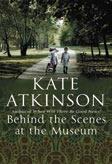
I’d been writing for just a short time— perhaps a year—when I read this wonderful book. It filled me with ambition—I wanted to write something as funny, as moving, as warm, as complex and as beautifully constructed. I haven’t managed it yet—my books tend to be explorations of emotional landscapes rather than the vast canvas of human life in this novel. But I still hope to attempt it some day.
As told to Caroline Hutton
07•2015 | 129
Barry Mc c all/The Wo M an Who S T ole My l ife, Marian Keye S , £7.99, Penguin
©
FOR MORE, GO TO REadERsdiGEst.Co.UK/BooKs
You Couldn’t Make It Up
Win £50 for your true, funny stories! Go to readersdigest. co.uk/contact-us or facebook.com/readersdigestuk
I was qUeUInG In the sUpermarket behind a mother with two young boys who started squabbling.
The youngest boy, who looked about four, turned to his mother looking visibly upset and said, “Mummy, Jonathon is laughing at me because I have to get some glasses. Do I have to have them, Mummy?”
After scolding the eldest boy, his mother turned to him.
“Yes, Josh, you need them so you can see.”
“But, Mummy, how will I know if I’ve still got them on when I’m asleep?” he said.
“Why would you need them on when you’re asleep, Josh?” asked his mother.

With a sigh, Josh replied, “Mummy, don’t you know? I need them so I can see my dreams!”
JacqUelIne Daley, Stockton on Tees
my FrIenD, who’s a nUrse In an a&e Department, was telling me about a patient who arrived with
a gash in his head. She asked him how it had happened, and he replied that he was a farmer, and he and his son were working in a field when he’d felt a stone in his boot. He’d tried to shake his foot to work the stone out, but, finding it difficult to keep his balance, he decided to hold onto a fence pole.
At that moment, his son looked up from what he was doing, noticed his father standing on one leg shaking vigorously, and thought he was holding onto the electrified fence. He grasped a large stick and
© STEVE WAY | 07•2015 130 FUn & Games
whacked at his dad to break his hold on the fence, causing the injury to his head.
Apparently some stitches were needed to mend the wound, although I’m not sure if the father and son’s relationship is mended yet.
wesley lewIs, Belfast
I was FlIckInG throUGh the FamIly bIble with my nephew. As we went through, something fell out onto the floor. He picked it up and saw that it was a leaf that had been pressed in between the pages.
“Look what I’ve found,” he said, and then made me laugh when he continued: “I think it must be Adam’s underwear.” mIcha bryn, Merseyside
a FrIenD oF mIne, whose job is to do in-store demonstrations in supermarkets, had developed a rapport with an old lady who came into the shop most days. She was always keen to try his titbits of various promotions.
One week near Christmas, he said to her, “If you come in tomorrow. I’ll have some rather nice wine for you to try.’’
The following day, the lady appeared at the shop and my friend went to give her a small plastic thimble of wine, at which point she reached into her handbag and produced a full-sized wine glass.
Frank annable, Dorset
my class oF FIve-year-olDs are very interested in mini-beasts. We kept snails in an old aquarium for a week, watching and sketching them. After one escaped overnight, one of the children found it by following its silvery trail. Halfway up the wall, it was innocently munching a portrait of itself.
There was no stopping the child after that. He arrived at school the next day with a grin and announced that he’d brought me something. He began to search his pockets.
“What is it?” I asked cautiously.
“A slug, Miss!” he replied.
“Alive?” I enquired.
“Yes, miss,” he said.
There was further digging in pockets, then his expression became decidedly mournful.
“Bother!” he said. “I’ve left it in my other pair.” veronIca brIGht, Cornwall
my local choral socIety put on a Zimbe! concert recently, a fantastic show of African singing. Just before the production started, a lady came in, dressed rather exotically in chiffon and a daring belly-dance hip-scarf covered in dangling gold coins.
Looking rather nervous, she sat next to me on the back row.
“You’ve gone to a lot of trouble to get dressed up. Have you been to a Zimbe! concert before?” I asked.
“Zimbe! ?” she said. “I thought it said Zumba.” anDrew berry, Lincoln
r ea D er’s D IG est 07•2015 | 131
Bringing Music to your ears





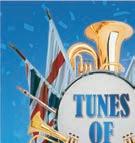






Magic of Musicals

Love Changes Everything

•
I Don’t Know How to Love Him
• A Fine Romance
Cheek to Cheek
•
• Bewitched
• Some Enchanted Evening
My Funny Valentine •
•

• Maria
• I Know Him So Well in the Clowns Memory Dream Will Do… 33 tracks.
CD

• Send
•

R50012 £9.99



Tunes of Glory

Man of Harlech

Red Line Clouds

• The Thin
• Cavalry of the

• Battle of Britain
• Reach for the Sky

March Spitfire Prelude
•
•

• Aweigh Warship
•
How to order

The Dam Busters Anchors
• By Land and Sea
• Rule Britannia… and more!

R50011

(Please quote RDP028 when ordering)
Online: shop.readersdigest.co.uk
Phone: 0844 332 8080
(8am-8pm Mon-Fri, 9am-5pm Sat-Sun)
By Post: Reader’s Digest
RTHR-LLRY-ZHYS, Ringwood, BH24
1HD (Cheques should be payable to Reader’s Digest


remember to and include your full name and address, along with the details of the item(s) required).


, FREEPOST , and please quote RDP028

CD £9.99



POSTAGE ON ALL ORDERS!
FREE
it pays to increase your
Word Power
The challenge is on, Word Power fans! We canvassed Reader’s Digest editors worldwide for their favourite words, and they answered the call in top linguistic form. Are you game? Answers on the next page.
By Emily Cox & H E nry r at H von
1. antediluvian (an-tih-duh-‘loovee-en) adj—A: at dusk. B: nonalcoholic. C: developed a long time ago.
2. bamboozle (bam-‘boo-zuhl)
v—A: get drunk. B: deceive. C: get quickly out of control.
3. blandish (‘blan-dish) v
A: coax with flattery. B: wave like a flag. C: tone down.
4. pellucid (puh-‘loo-suhd) adj
A: easy to understand. B: frozen solid. C: innocent of a crime.
5. debacle (dee-'bah-kuhl) n
A: celebration. B: complete collapse. C: utter surprise.
6. blunderbuss (‘bluhn-der-buhs)
n—A: sloppy kiss. B: careless person. C: pitfall.
7. spelunking (spe-‘luhnk-ing) n
A: racing on sleds. B: lifting weights. C: exploring caves.
8. onomatopoeia (oh-nahmah-tuh-‘pee-uh) n—A: the use
of words whose sound suggests the sense. B: repetition. C: type of speech impediment.
9. dreadnought (‘dred-not) n
A: braid of hair. B: medieval criminal. C: the largest of its kind.
10. sanguine (‘san-gwen) adj
A: confident. B: melodic. C: of or relating to the sun.
11. brouhaha (‘brew-hah-hah) n
A: group of witches. B: practical joke. C: uproar.
12. obfuscate (‘ahb-fuh-skayt) v
A: snatch away from. B: obscure.
C: set on fire.
13. deride (dih-‘riyd) v—A: laugh at contemptuously. B: dismount.
C: exterminate.
14. pusillanimous (pew-sih-‘la-nuhmus) adj—A: catlike. B: odorous.
C: cowardly.
15. detritus (dih-‘triy-tuhs) n
A: unpaid bills. B: debris. C: gap between two teeth.
07•2015 | | 133
answers
1. antediluvian—[C] developed a long time ago. “The cobbler used family honoured antediluvian methods to repair shoes.”
2. bamboozle—[B] deceive. “Don’t let that smooth politician bamboozle you.”
3. blandish—[A] coax with flattery. “The salesman could blandish his customers into buying his wares.”
4. pellucid—[A] easy to understand. “The physics teacher had a knack for giving surprisingly pellucid lectures.”
5. debacle—[B] complete collapse. “The rainy weather turned our picnic into a debacle.”
6. blunderbuss—[B] careless person. “What kind of blunderbuss can’t even remember to put the fire out before leaving the camp?”
7. spelunking—[C] exploring caves. “Geology research led Andy to adopt spelunking as a favourite hobby.”
8. onomatopoeia —[A] the use of words whose sound suggests the sense. “With on-screen bursts like kapow, Batman was famous for its use of onomatopoeia .”
9. dreadnought—[C] the largest of its kind. “That dreadnought of a van is a real gas guzzler.”
10. sanguine—[A] confident. “After studying the footprints, I’m fairly sanguine that our cat is responsible for the mess in the kitchen.”
11. brouhaha—[C] uproar. “The referee’s call of offside led to quite a brouhaha with the losing team.”
12. obfuscate—[B] obscure. “Could these instructions possibly obfuscate the desk’s construction any further?”
13. deride—[A] laugh at contemptuously. “Know-it-all Alex derided his little sister for entering the school bake-off, but she got the last laugh after taking first place.”
14. pusillanimous—[C] cowardly. “Bert Lahr played the pusillanimous lion in The Wizard of Oz .”
word of tHE day*
PortCullis: iron-barred gate at the entrance to a castle.
alternative suggestions:
“a beast native to portugal that requires culling.”
“a tall wide-mouth glass used for drinking port.”
“Musketeer from portsmouth.”
15. detritus [B] debris. “Tim photographed the detritus of the city streets for his abstract project.”
voCaBulary ratings
9 & below: assistant editor
10–12: senior editor
13–15: editor-in-chief
Word Po W er | 07•2015 134 p o
*POST YOUR DEFINITIONS EVERY DAY AT faCEBooK.Com/rEadErsdigEstuK
Get this entire selection of succulent, outdoor reared, UK grass-fed beef – traditionally matured for a minimum of 28 days – delivered FREE to your door for just £29.
your

■ 2 Sirloin Steaks (190g each)
■ 2 Pavé Rump Steaks (150g each)
■ 1 pack Minced Steak (440g)
■ 6 Mini Steak Burgers (270g total)
■ 8 Pork Sausages (560g total)
■ 1 Meat Perfection Cooking Guide



Was



01467 629666 and quote RDG1505 to place your order now!
Summer Is Here! Call
£62.25 Now only £29 plus FREE delivery
BrainTeasers
Challenge yourself by solving these puzzles and mind stretchers, then check your answers on page 139.
Dominoes
Which domino belongs to the set?
a
sYmboLism
Provide the missing symbol from the grid below. ? a
oDD one oUT
Why doesn’t “E” fit in with the other items in this set of five?
| 07•2015 136
b c
b c D
a b c D e FUn & Games
THe PiLe-UP eFFecT
Take a look at the shapes below and provide another object for the set. sHaPes
07•2015 | | 137
a b c
is to is to as a b c
| 07•2015 138 Time For Tea A quick and easy teatime crossword. 1 across 01 Dissolve (4) 03 Notion (4) 05 Quick (5) 06 Stringed instrument (4) 08 Israel’s currency (6) 10 Thrilling tale (9) 13 Travelling show (6) 15 Leg joint (4) 16 Big (5) 17 Inform (4) 18 Small horse (4) nswersa :crossa 1 Melt 3 Idea 5 Rapid 6 Harp 8 Shekel 10 Adventure 13 Circus 15 Knee 16 Large 17 Tell 18 Pony :ownD 1 Might 2 Trip 3 Idle 4 Adult 7 Rider 8 Sinus 9 Koran 11 Scent 12 Reply 14 Call 15 Keep Down 01 Strength (5) 02 Stumble (4) 03 Lazy (4) 04 Fully grown (5) 07 Horseman (5) 08 Nasal duct (5) 09 Holy book of Islam (5) 11 Fragance (5) 12 Answer (5) 14 Summon (4) 15 Retail (4) 2 3 4 5 6 7 8 9 10 11 12 13 14 15 16 17 b RAI n T e AS e RS 18
* Entry is open only to residents of the UK, Channel Islands, Isle of Man and Republic of Ireland aged 18 or over. It is not open to employees of Vivat Direct Limited (t/a Reader’s Digest), its subsidiary companies and all other persons associated with the competition.
BrainTeasers: Answers
Dominoes
C. The bottom number minus the top number always equals one.
sYmboLism
A. The symbols on the top line occur in reverse sequence on the bottom line; the symbols on the second line from the top occur in reverse sequence on the second line from the bottom; the symbols on the third line from the top occur in reverse sequence on the third line from the bottom; and the symbols on the fourth line from the top occur in reverse sequence on the fourth line from the bottom.
oDD one oUT
In each group of three symbols, there’s at least one symbol that’s empty inside.
sHaPes
B. The sides of the three shapes are added together to produce a new shape with a number of sides equalling the sum. In the first example, two triangles and a hexagon add up to 12 sides to produce a dodecagon. In the second, three triangles have nine sides altogether. This makes a nonagon.
THe PiLe-UP eFFecT
B. Each object in the set is made up of three composite shapes; A and C have only two.
£50 Prize qUesTion
Answer published in the August issue
Only one number will divide int all these numbers without leaving a remainder. Which is it? The number is greater than 1.
The first correct answer we pick on July 9 wins £50!* email excerpts@readersdigest.co.uk
answer To JUne’s Prize qUesTion
anD THe £50 Goes To… Derek Spencer, Warwickshire
07•2015 | | 139
r ea D er’s Di G es T
287 246 205 ? 164 123 369
Laugh!
Win £50 for every reader’s joke we publish! Go to readersdigest. co.uk/contact-us or facebook.com/readersdigestuk
One niGht, a lady with a black eye stumbled into a police station. She told the desk sergeant that she’d heard a noise in her back garden and had gone to investigate.
The next thing she knew, she was hit in the face and knocked out cold.
An officer was sent to her home and returned later, also sporting a whopper of a black eye.
“Did you get hit by the same attacker?” his boss asked.
“No sir, I didn’t,” he replied. “I stepped on the same rake.”
GlORia wildinG, Merseyside
a man in a baR sees a FRiend at a table drinking by himself.
Approaching the friend, he says to him, “You look terrible, mate. What’s the problem?”
“My mother died in August,” he said, “and left me £25,000.”
“Blimey, mate, that’s really tough,” he replied.
“Then in September,” the friend continued, “my father died, leaving me £90,000.”
“Wow. Two parents gone in two months. No wonder you’re feeling so depressed.”
“And last month my aunt died, and left me £15,000.”
“Three close family members lost in three months? How sad.”
“Then this month,” continued the friend, “absolutely nothing!”
ahajOkes.cOm
i saw a pOsteR FOR Mission iMpossible iii the other day. I thought, It’s not impossible if he’s already done it twice .
cOmedian maRk watsOn
i believe a lOt OF cOnFlict in the Wild West could’ve been avoided completely if architects in those days had just made their towns big enough for everyone. Reddit.cOm
dOUG smith is On his deathbed and knows the end is near. His nurse, his wife, his daughter and his two sons are with him. He asks for two witnesses to be present and a
| 07•2015 140 FUn & Games
camcorder be in place to record his last wishes, and when all is ready he begins to speak.
“My son Bernie, I want you to take the Mayfair houses. My daughter Sybil, you take the apartments over in the East End. My son, Jamie, I want you to take the offices over in the City Centre and Sarah, my dear wife, please take all the residential buildings on the banks of the river.”
The nurse and witnesses are blown away as they didn’t realise that he has extensive holdings, and as Doug slips away, the nurse says, “Mrs Smith, your husband must have been such a hard-working man to have accumulated all this property.”
His wife replies, “Property? He had a paper round!” william bOyle, Denny
want sOme hiGhly OFFensive shOes? Get some Clarks-on.
cOmedian RichaRd wOOlFORd
hOw is it that OUR memORy is good enough to retain the least triviality that happens to us, and yet not good enough to recollect how often we have told it to the same person? dRew byRne, Lancashire
beFORe i went tO a lessOn, I used to smoke pot. I’d sneak in tenminutes late with a rubbish excuse, sink down low at my desk and pray that nobody asked me any questions.
I was the best teacher ever.
cOmedian nathan andeRsen
hUnGRy pets
You can look like that all you want, you’re not getting any (sadanduseless.com)






Reade R ’s d i G est 07•2015 | 141
paintballinG: I just find it too emulsional. seen Online
ed and caROlyn met while On a sinGles cRUise and Ed fell head over heels for her. They discovered they lived in the same city and met up when they were back.
Within a couple of weeks, the pair had been on many dates to all sorts of places, and Ed was sure that this woman was his true love—every date seemed better than the last.
On the one-month anniversary of their first dinner, Ed took Carolyn to a fine restaurant. Ed leaned over and said, “I’m very much in love with you and I’d like a little talk before our relationship continues to the next stage. So, before I get a box out of my jacket and ask you a life-changing
question, it’s only fair to warn you, I’m a total golf nut. I play golf, I read about golf, I watch golf on TV. In short, I eat, sleep, and breathe golf. If that’s going to be a problem for us, you’d better say so now!”
Carolyn took a deep breath and responded, “Ed that certainly won’t be a problem. I love you as you are and I love golf too. But, since we’re being totally honest with each other, you need to know that for the last five years I’ve been a hooker.”
Ed said, “I bet it’s because you’re not keeping your wrists straight when you hit the ball.” jOkes4U.cOm
even thOUGh i’m pROUd my dad invented the rear view mirror, we’re not as close as we appear.
cOmedian stewaRt FRancis
Rock outfit Angry Small Band aren’t famous (or really any good), but they won’t let that get in the way of their artistic temperament. As seen on Twitter.
Lost it on stage tonight and had a 20-minute rant at the promoter’s lack of professionalism. Sorry for spoiling your wedding, Lucy and Paul.
EXCITING NEW TUNE. Working title: “30-minute one-note intro to our first song turn on the smoke machine wait don’t right that down as well.”
The best music will remain undiscovered. Like all great artists we’d prefer to be more relevant after our time.
Sorry set was short but we’re still breaking in new line-up and the second drummer doesn’t really know the set yet. He’s on a verbal warning.
selF-RiGhteOUs band
La UGH ! | 07•2015 142
Beat the Cartoonist!

Think of a witty caption for this cartoon—the three best suggestions, along with the cartoonist’s original, will be posted on our website in late august. If your entry gets the most votes, you’ll win £100 and a framed copy of the cartoon with your caption.
Submit to captions@readersdigest.co.uk or online at readersdigest.co.uk/caption by July 17.
We’ll announce the winner in our September issue.

May’s Winner
Our voters didn’t have much love for cartoonist Steve Way’s original caption, “can’t you gag writers write faster? i’m due before the king in ten minutes,” preferring instead reader Rick Haswell’s far more terse effort, “a bad workman blames his fool.” Simple but effective!

The Plight of African Migrants
Dominique Mollard discusses his timely and poignant documentary Adrift: People of a Lesser God
• “i Remember”: Tony Jacklin
• eye health Breakthroughs
• Best of British: Costal Walks
• The Dalai Lama Turns 80
07•2015 | 143
in T he augu ST i SS ue Plus
scORebOaRd: ReaDeRS 31 CaRTooniSTS 11
T O p: © GR a EME Y OUNG SON / B OTTOM : © STE v E W a Y Reade R ’s d i G est
60-Second Stand-Up
We caught up with stand-up carl donnelly on his way to Edinburgh
what’s the best paRt OF yOUR cURRent tOUR?
My recounting of a worrying online stalker that started messaging me last year. It starts silly, gets serious, then ends even sillier than it began!

have yOU FOUnd any paRts OF the cOUntRy tO be FUnnieR than OtheRs?
I always come back from Wales with a funny story. I have one about a run-in with a Cardiff cab driver who didn’t seem to know what coffee is!
yOUR mOst memORable heckle?
A woman once threw her shoes at me because she thought I was ruining her Christmas party.
any FUnny tales abOUt a time yOU bOmbed On staGe?
I once bombed so hard on stage that I didn’t even feel like I could walk off stage, so I grabbed a fire extinguisher at the side, set it off in my face and exited amid the puff of smoke.
whO’s yOUR cOmedy inspiRatiOn?
Tommy Tiernan is, in my opinion, the best living stand-up comedian.

He has an energy about him that I’ve yet to see in another comic.
iF yOU weRe a Fly On a wall, whOse wall wOUld yOU be On?
My own. I’d like to see what my flatmate really gets up to when I’m not around.
iF yOU cOUld have a sUpeR pOweR, what wOUld it be?
I’d have appropriate music play every time I walked into a room or down the street.
see carl’s show Jive Ass Honky at the edinburgh Fringe Festival next month. visit carldonnelly.co.uk for details
| 07•2015 144 La UGH ! FOR MORE, GO TO ReadeRsdiGest.cO.Uk/FUn-Games










Now a major ITV series Grantchester - The full time priest and part time detective is back in this latest instalment!












The Forgiveness
SHOP ONLY
Product Code: B10625 Paperback book
ITV’sSeries Grantchesteralso availableonDVD
of Sins SIDNEY CHAMBERS AND How to order (Please quote RDP028 when ordering) Online: shop.readersdigest.co.uk Phone: 0844 332 8080 (8am-8pm Mon-Fri, 9am-5pm Sat-Sun) By Post: Reader’s Digest, FREEPOST RTHR-LLRY-ZHYS, Ringwood, BH24 1HD (Cheques should be payable to Reader’s Digest, and please remember to quote RDP028 and include your full name and address, along with the details of the item(s) required).
£11.99
Visit our website for this and many more of your favourite books and dvd adaptations at shop.readersdigest.co.uk
specsavers.co.uk

Applies to one pair of glasses, from £69 range or above. Includes all frames, lenses and Extra Options. Excludes reglazes, safety eyewear, contact lens products and non-prescription sunglasses. Cannot be used with other o ers. Discount not transferable in whole or part for cash. Free eye test funded by the NHS. SKUs
25664249 / 25664294. ©2014 Specsavers. All rights reserved.
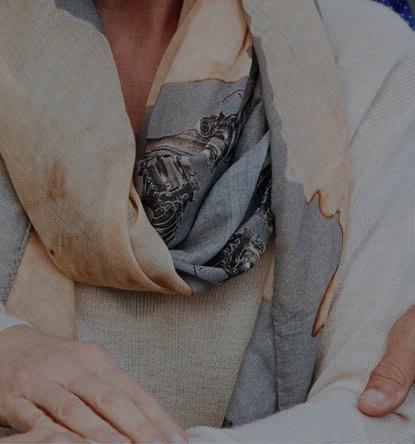
























 Tom Browne
theeditor@readersdigest.co.uk
Tom Browne
theeditor@readersdigest.co.uk
















 photo : francois rigaud photography
photo : francois rigaud photography























































































































































































































 Almaz Tefera with her grandson. “For every generation in this area, the famine is a benchmark”
Almaz Tefera with her grandson. “For every generation in this area, the famine is a benchmark”










 By lau R a d E a N -o S good
By lau R a d E a N -o S good
 The stunning view from the Minack theatre, Cornwall
The stunning view from the Minack theatre, Cornwall




































 photo: lia grainger
Hertwig at Bear Park Müritz, north of Berlin, which he helped design
photo: lia grainger
Hertwig at Bear Park Müritz, north of Berlin, which he helped design































































































































